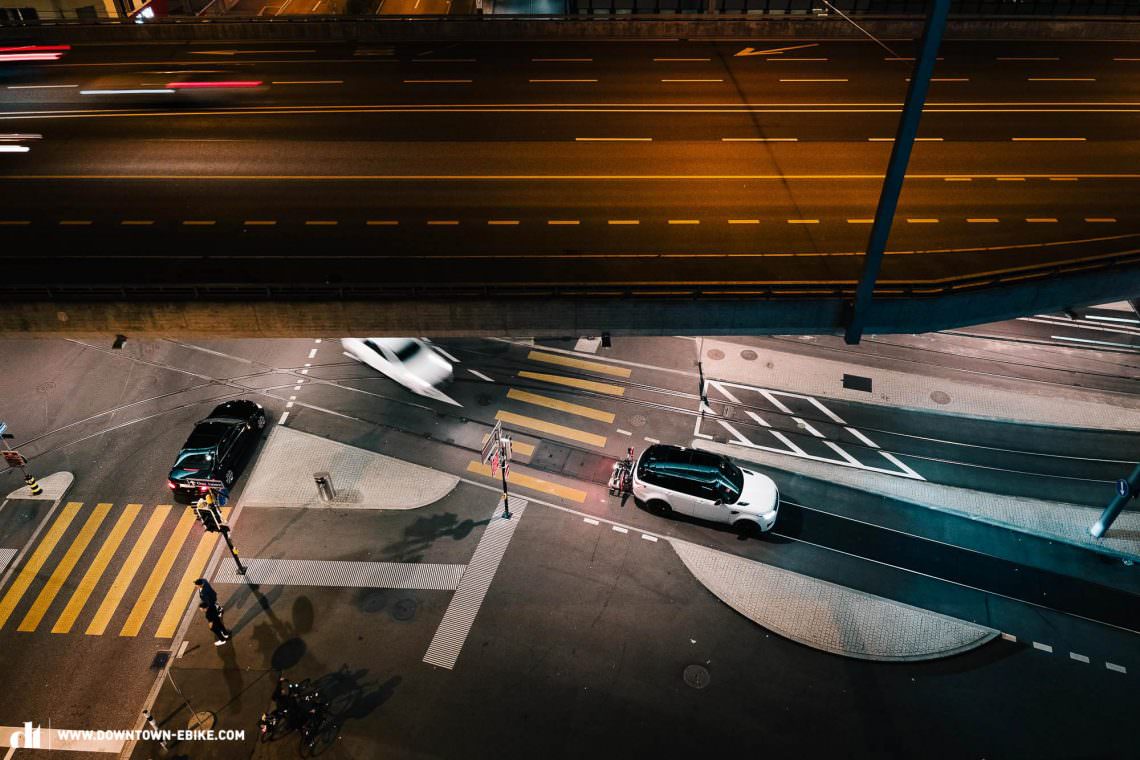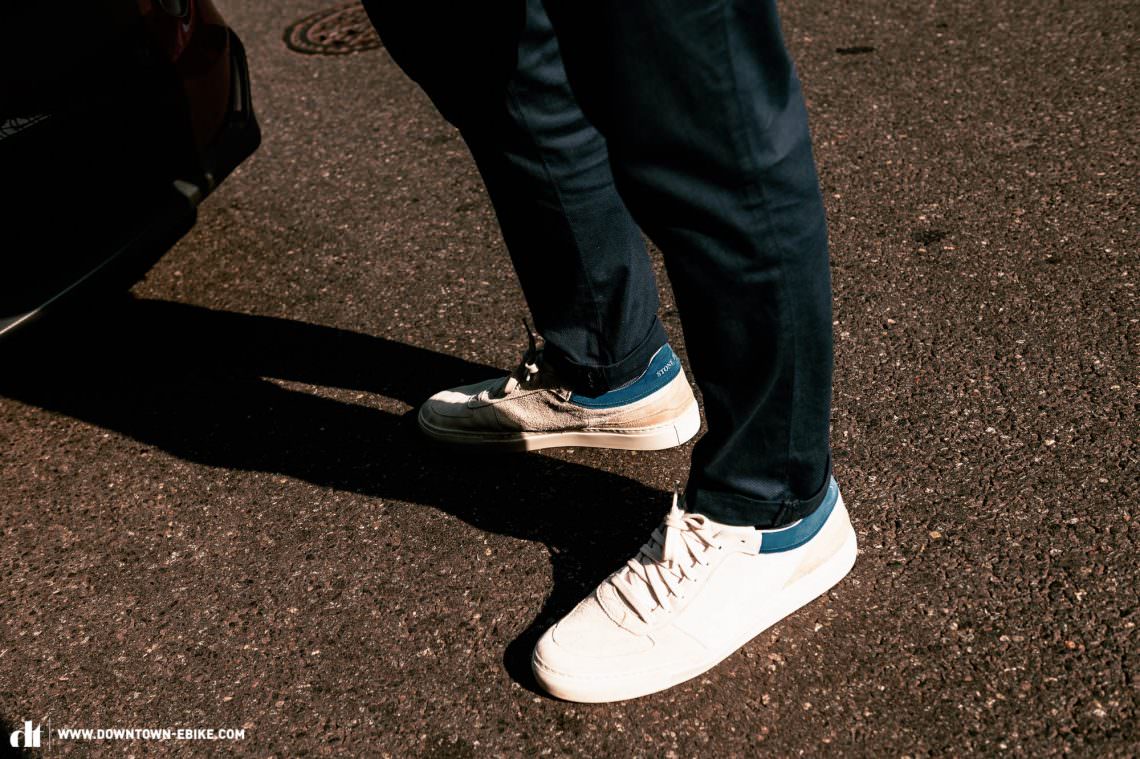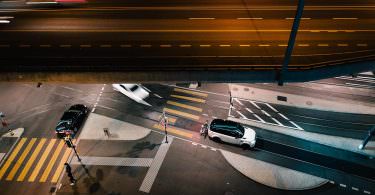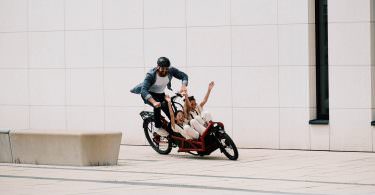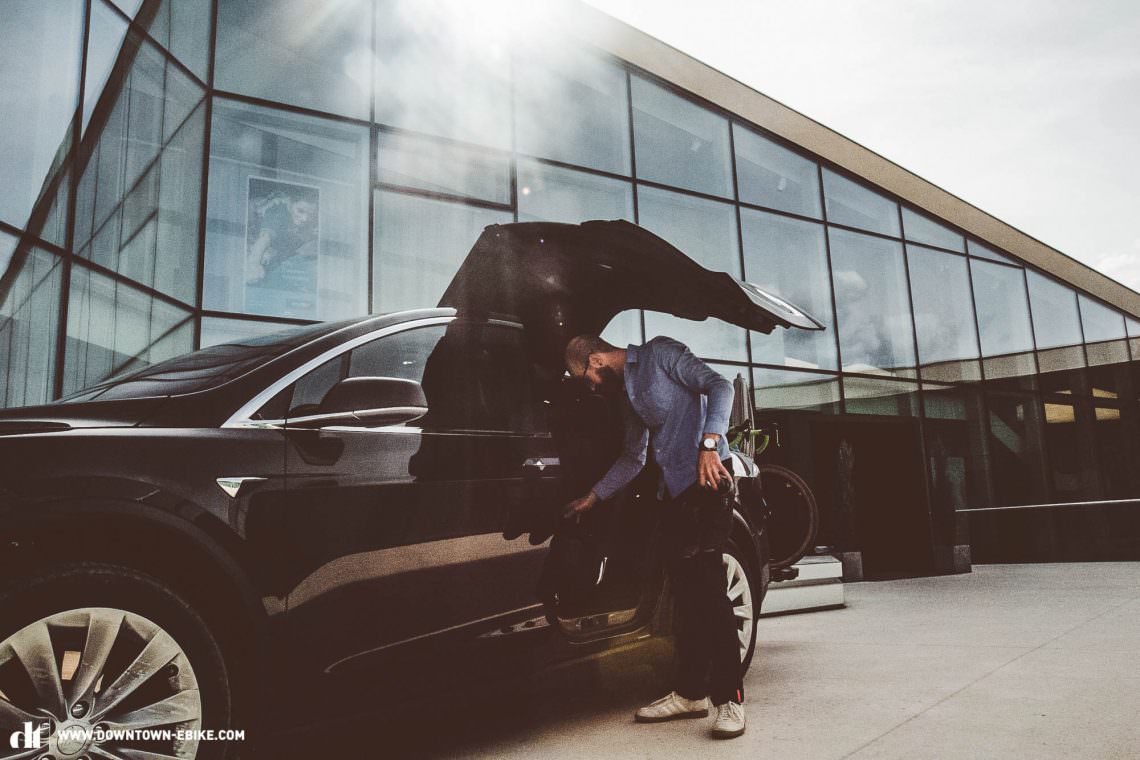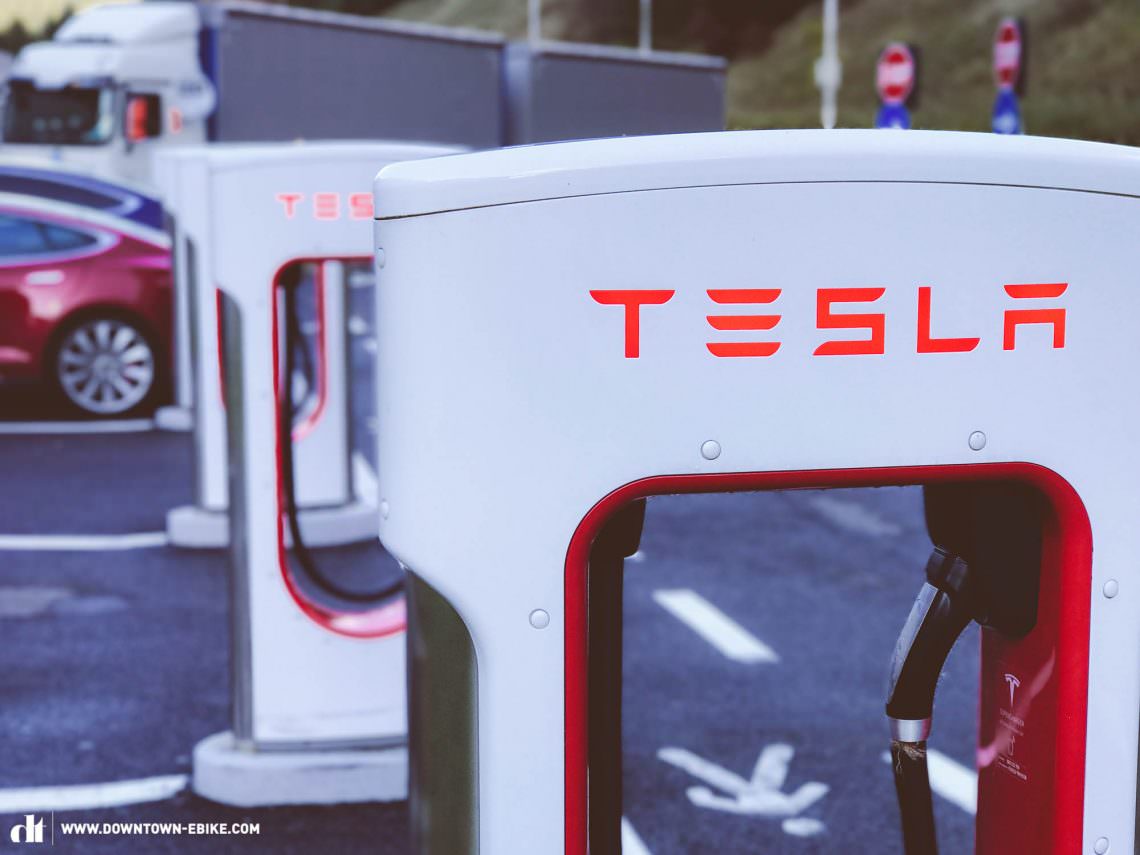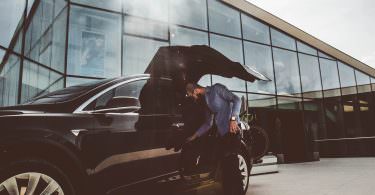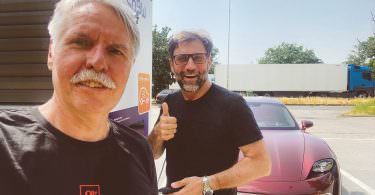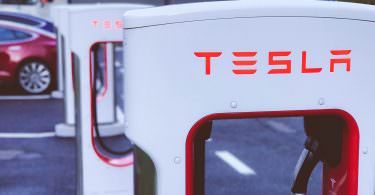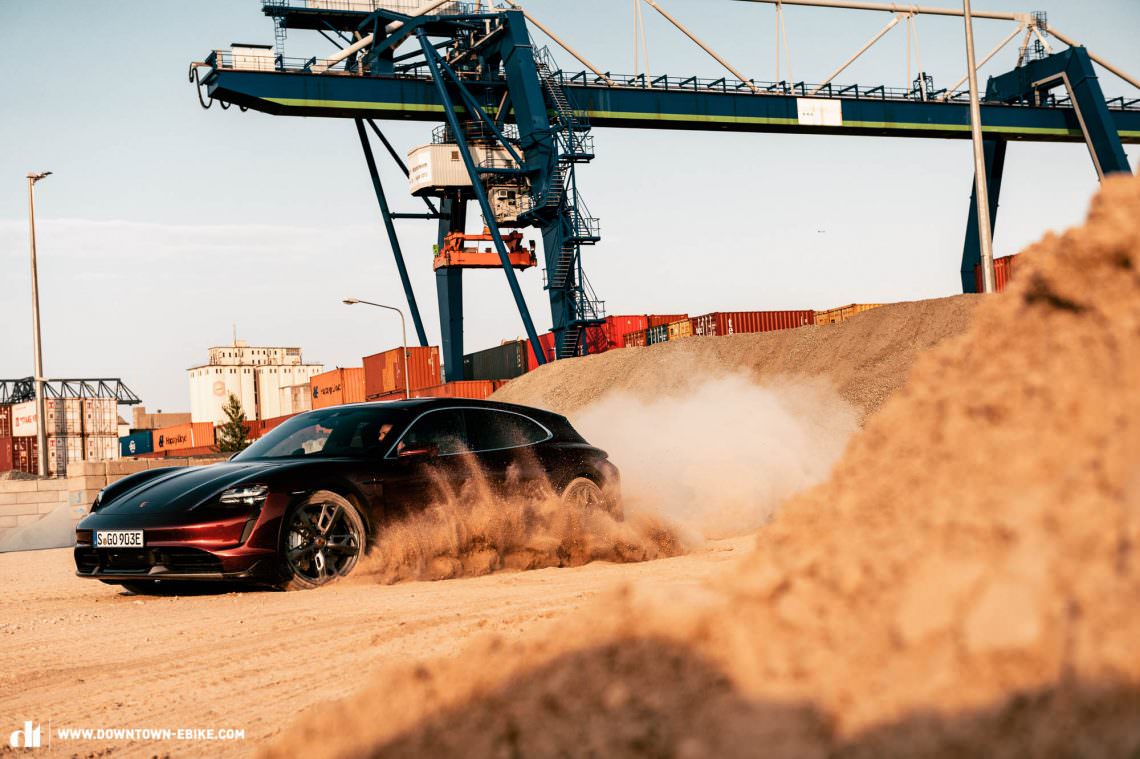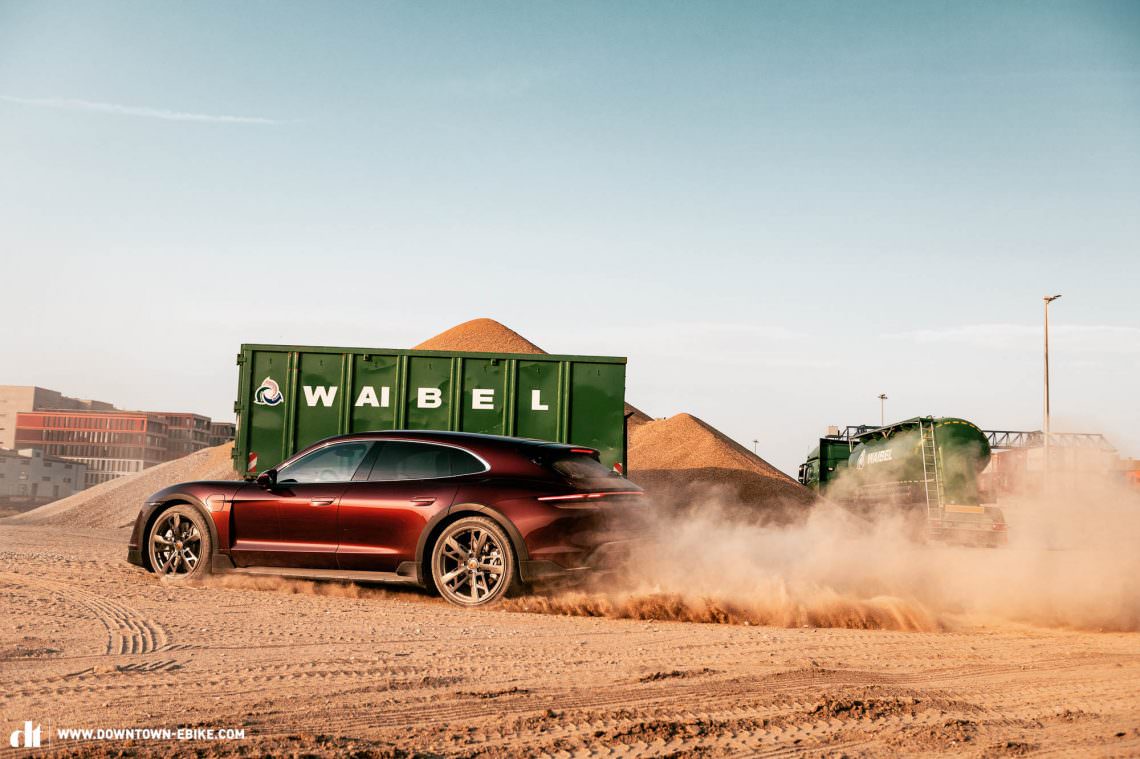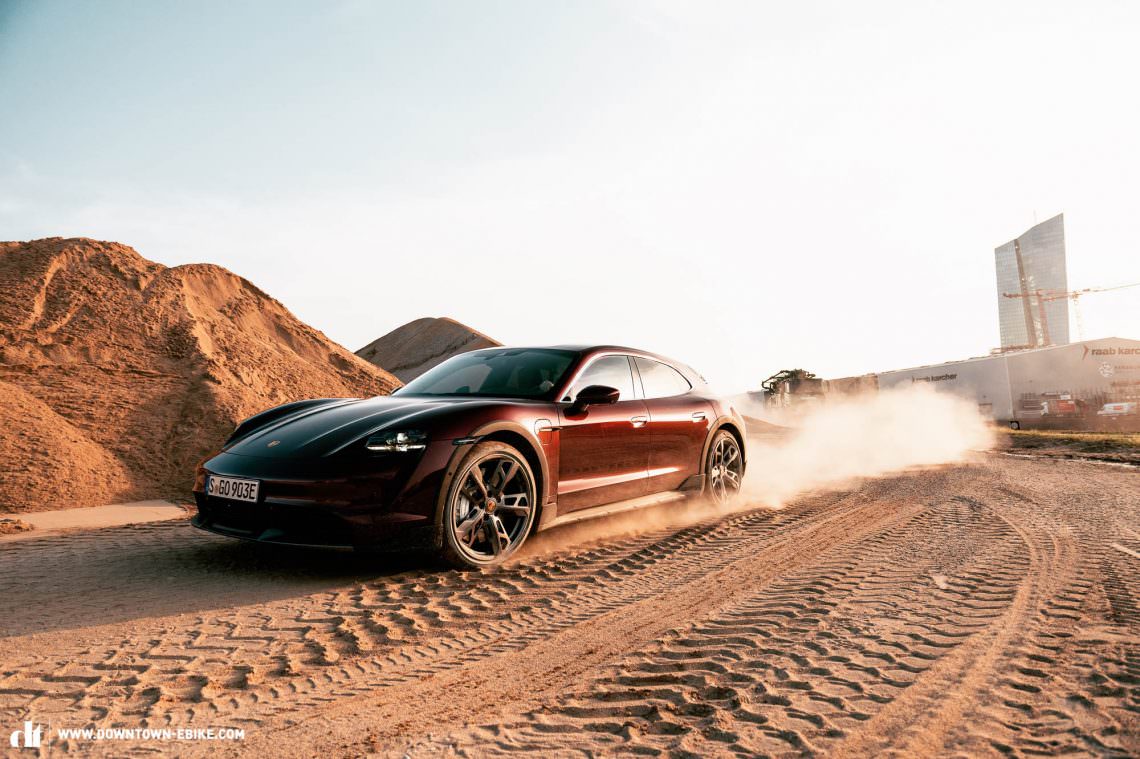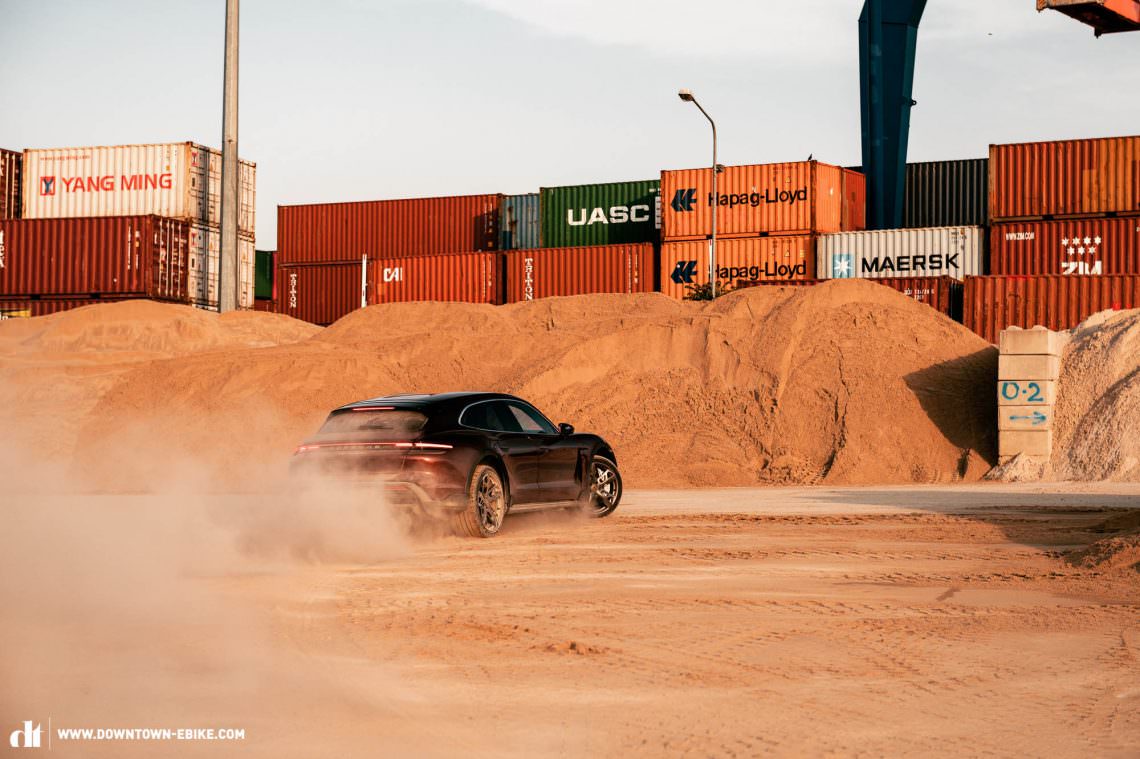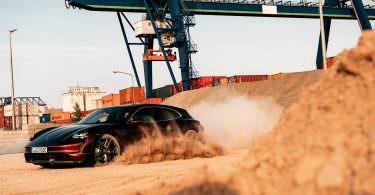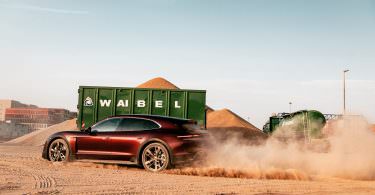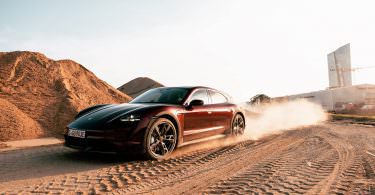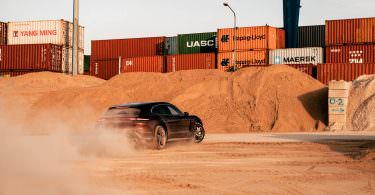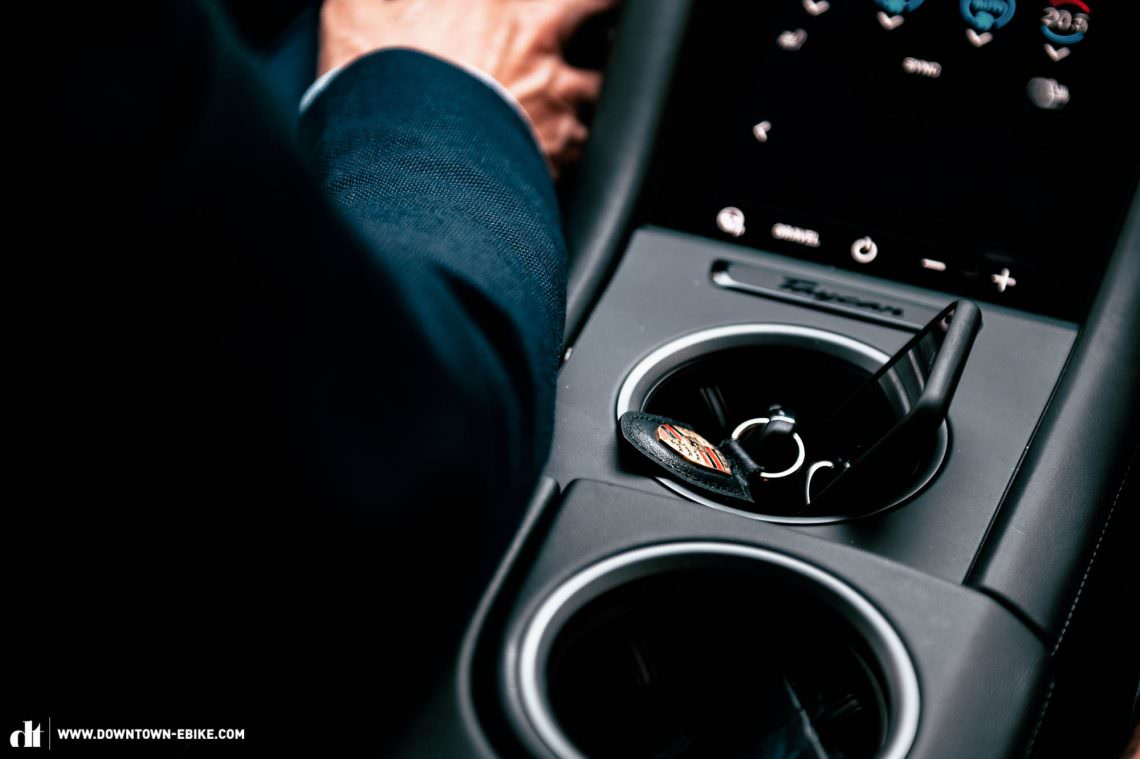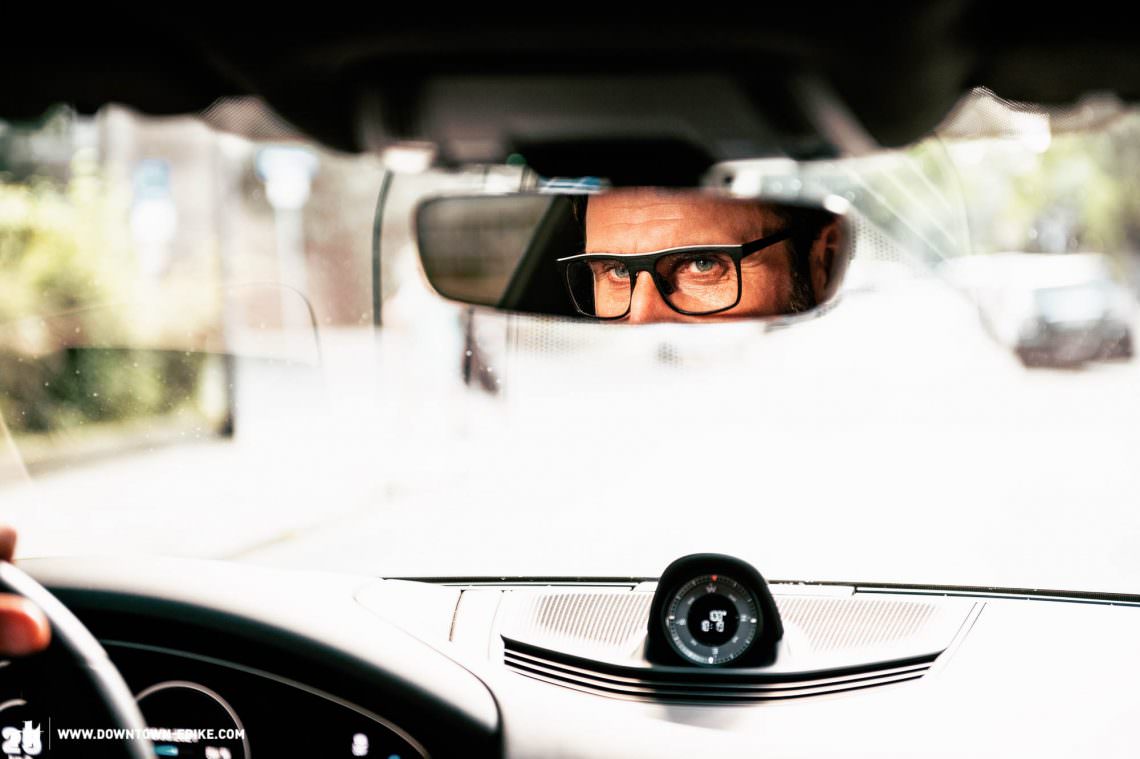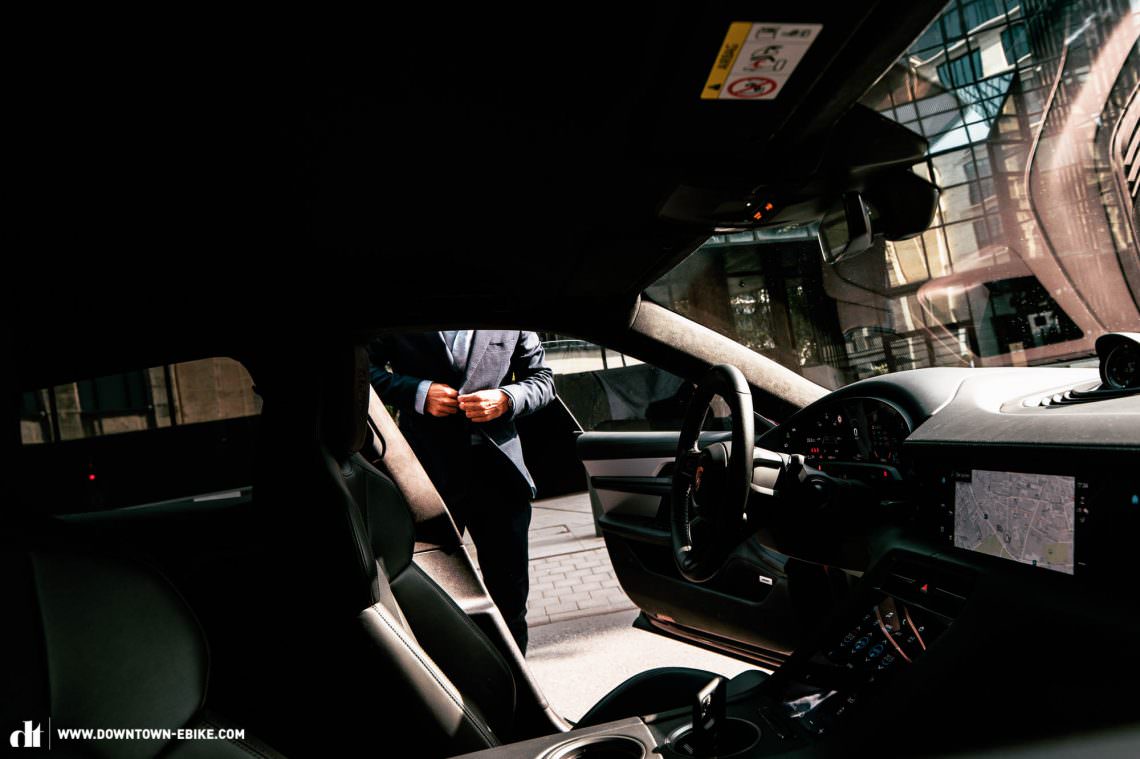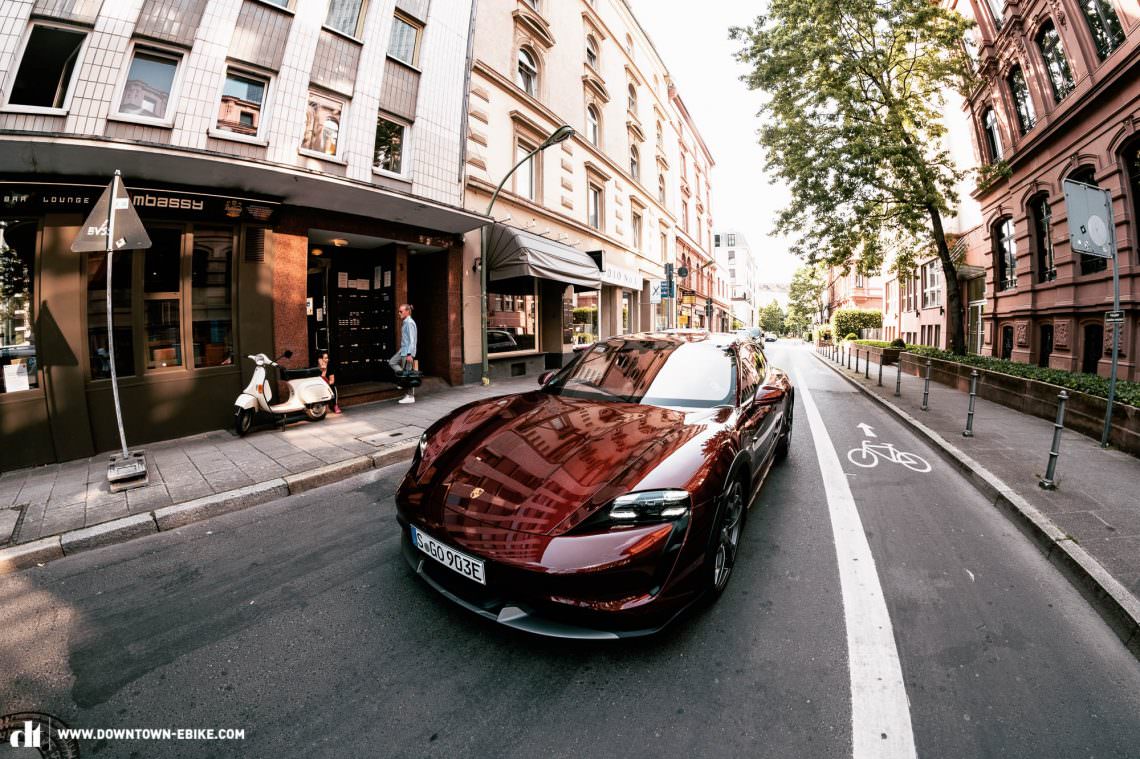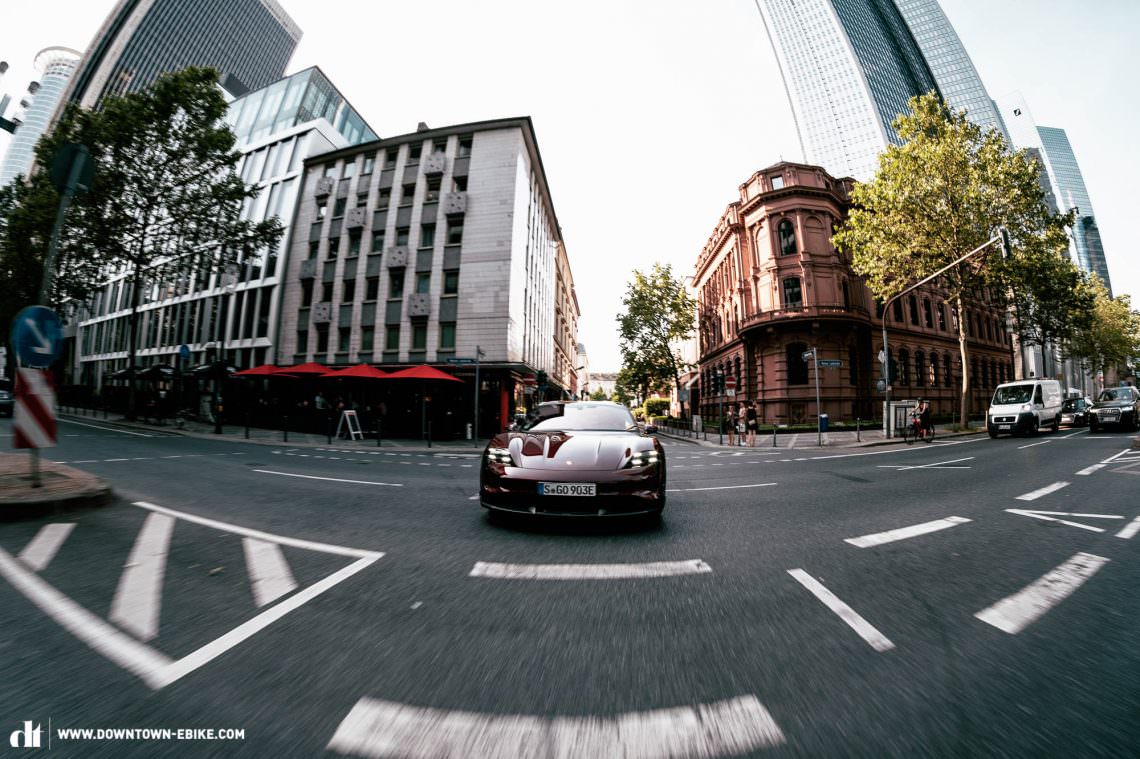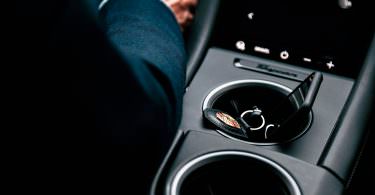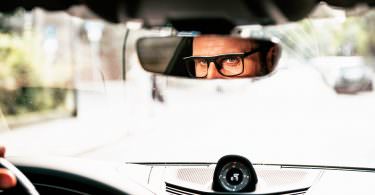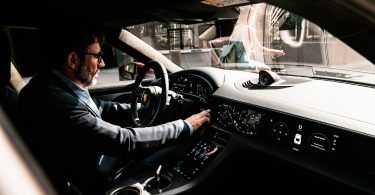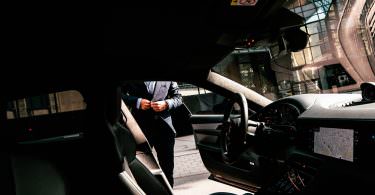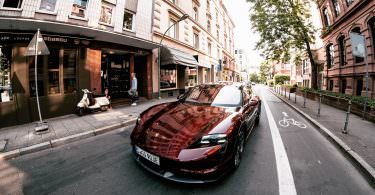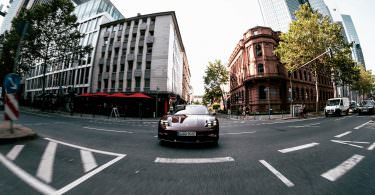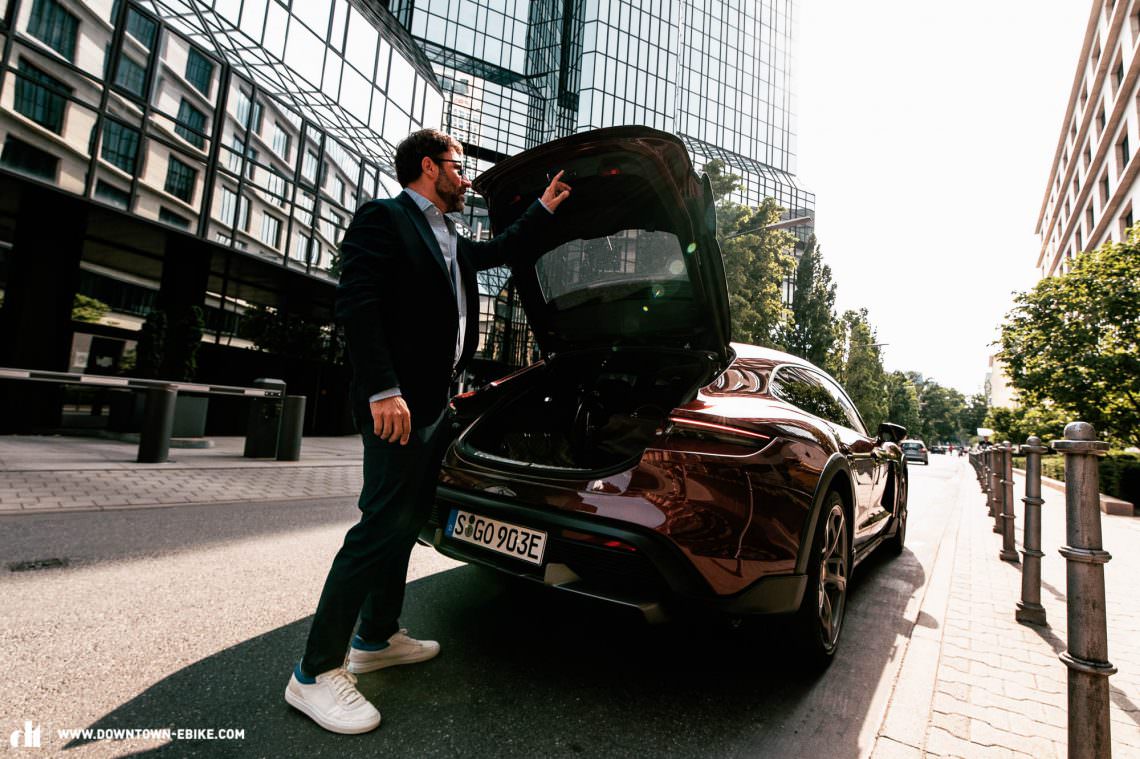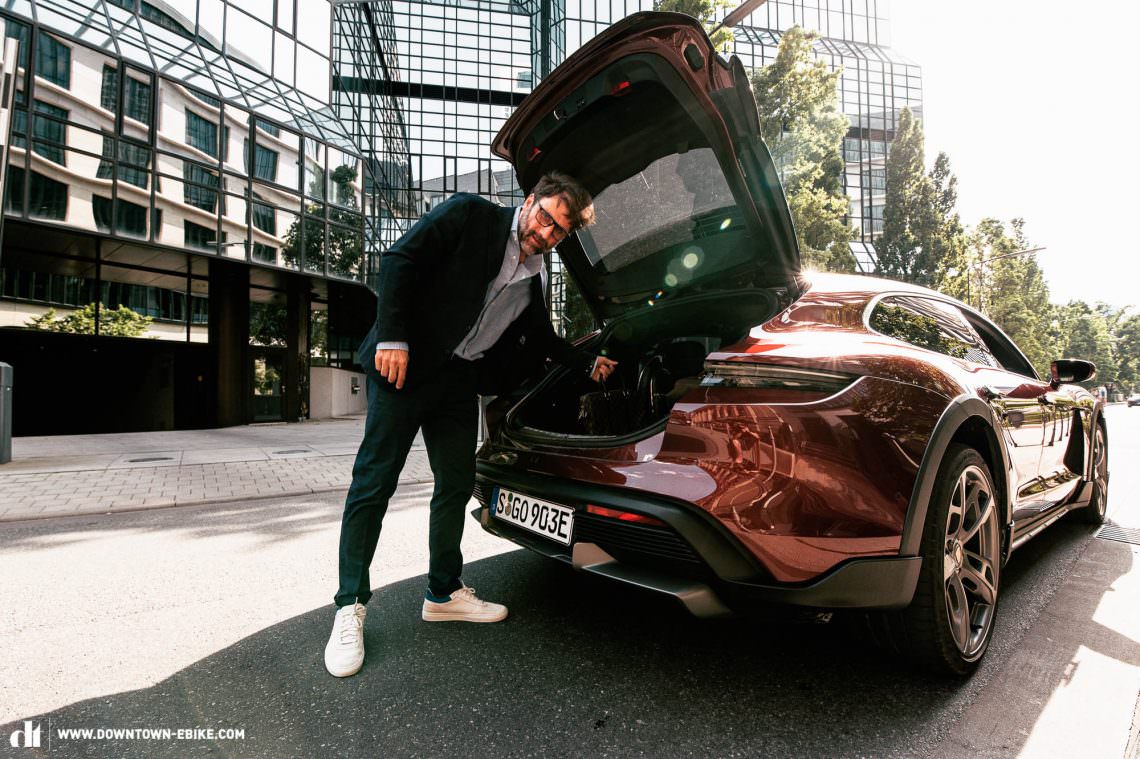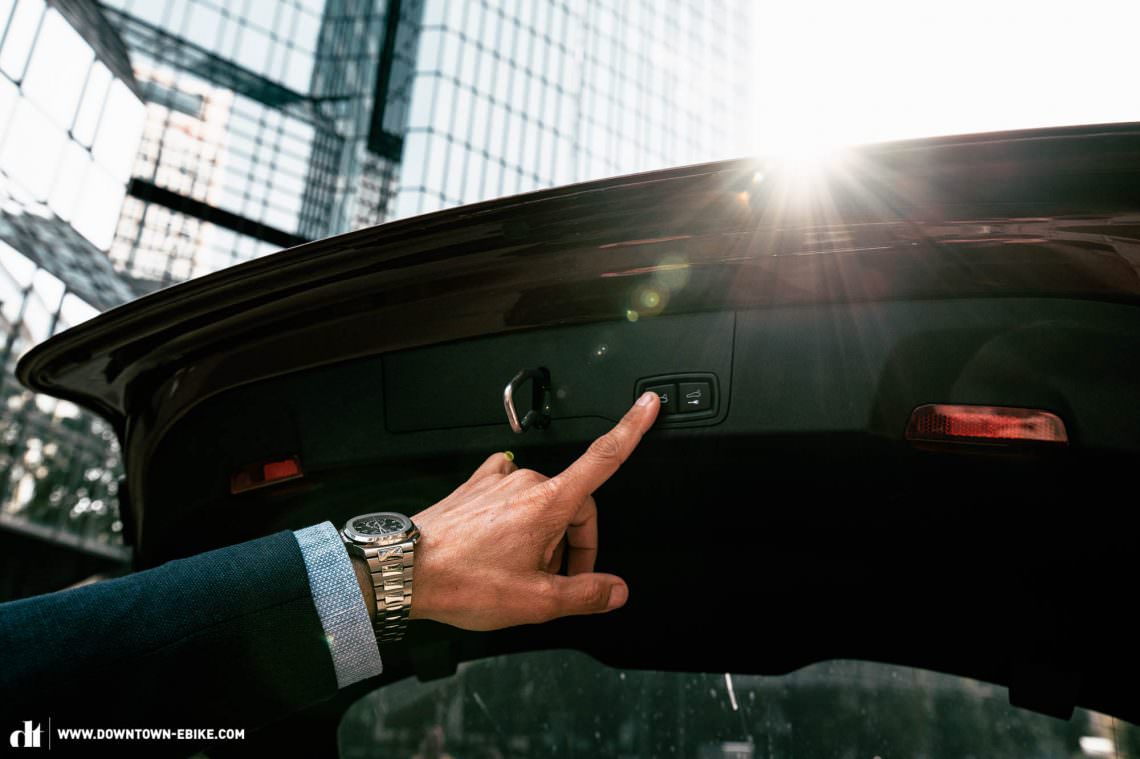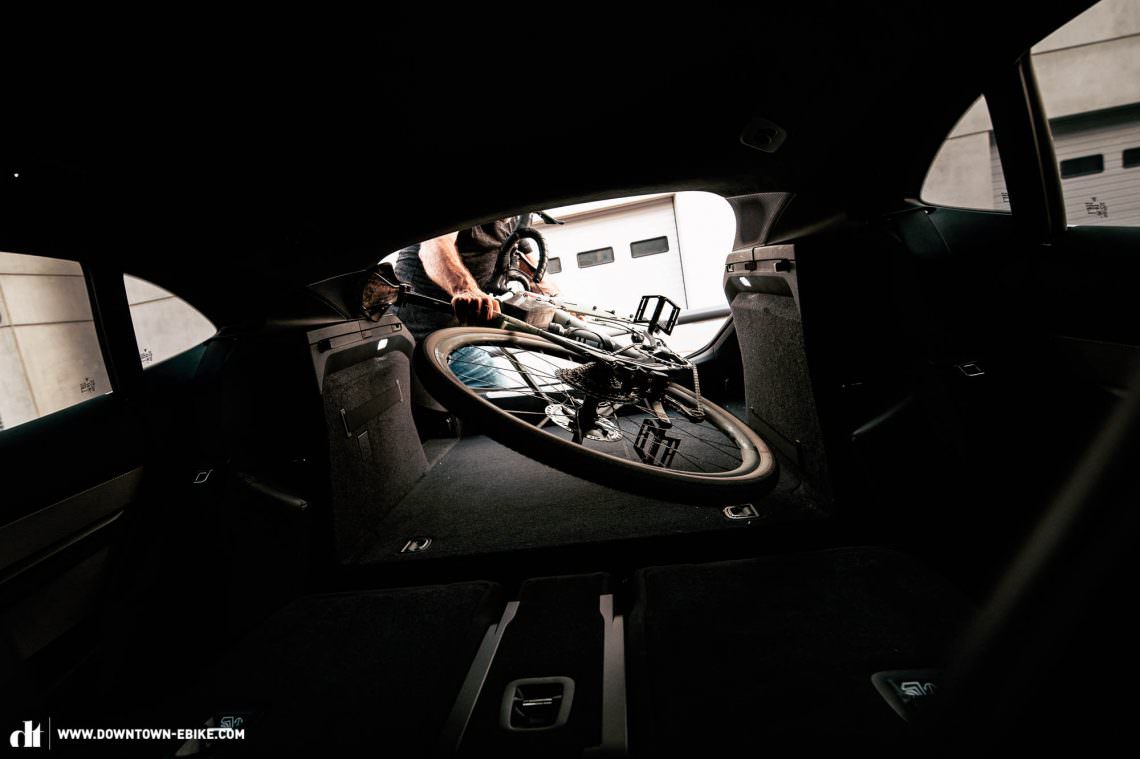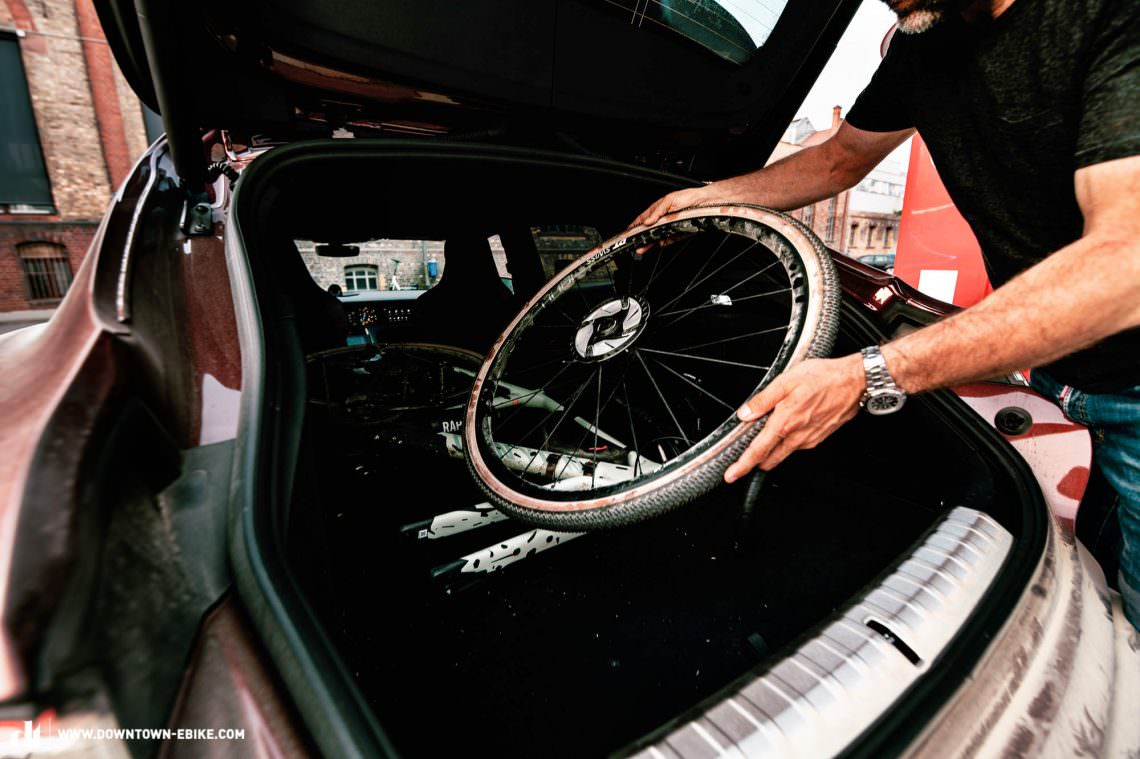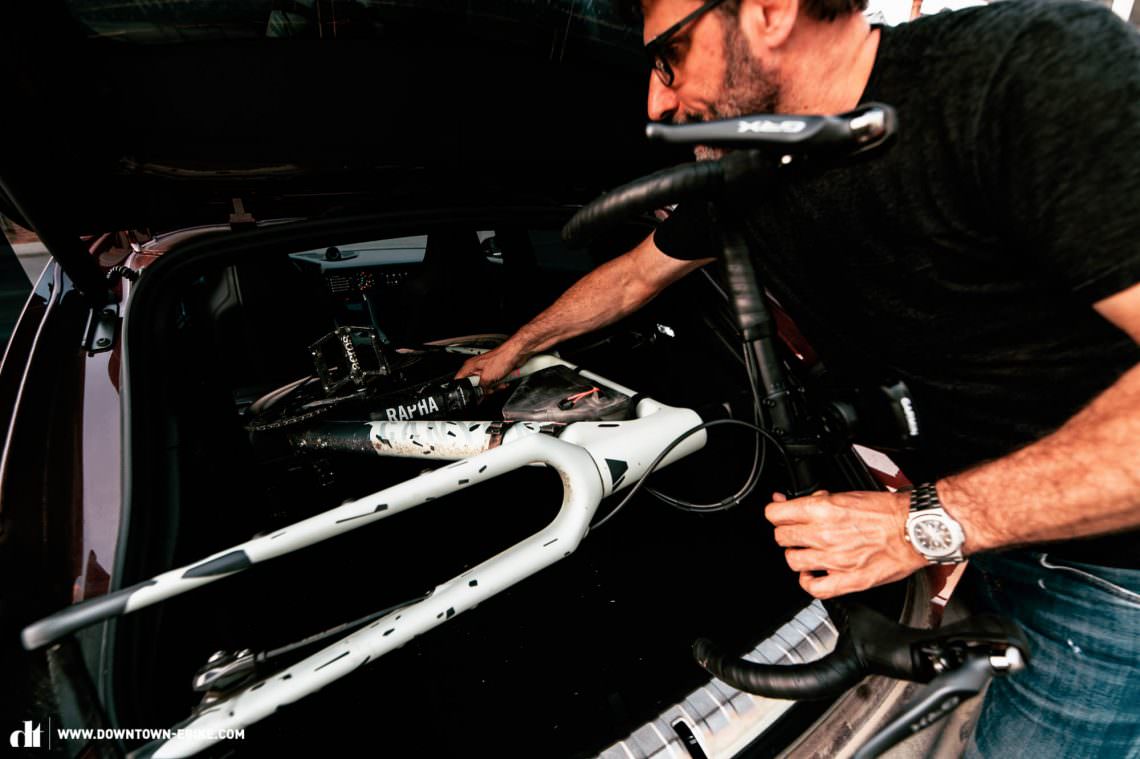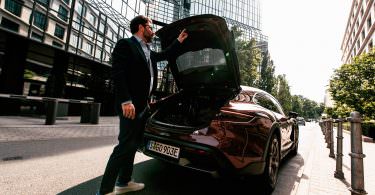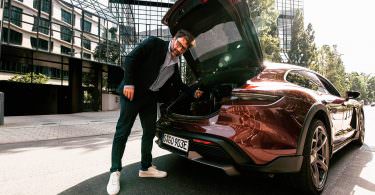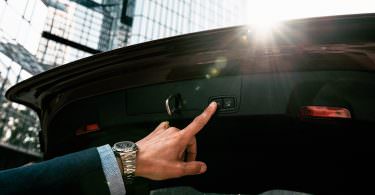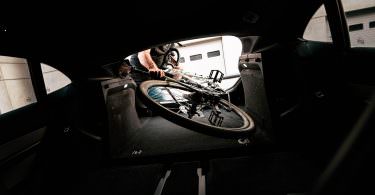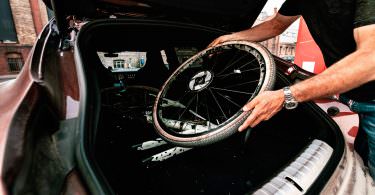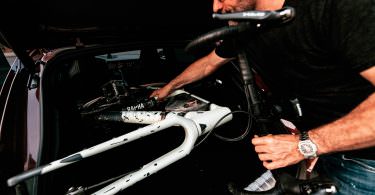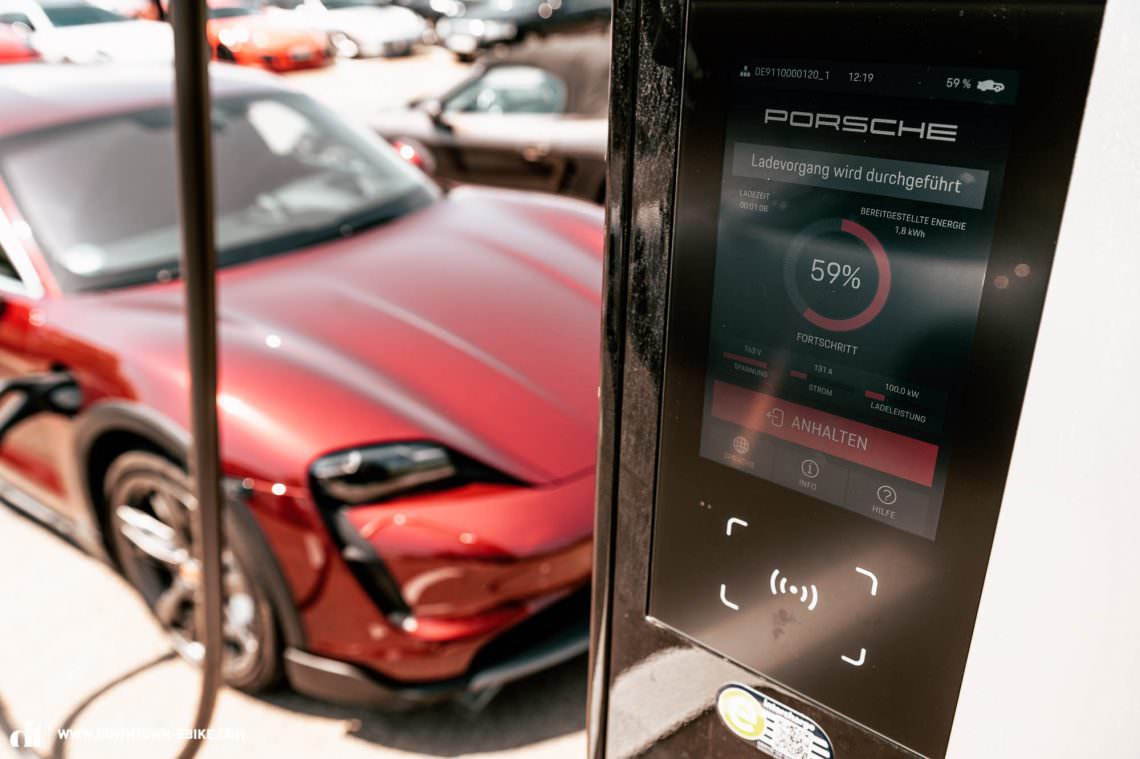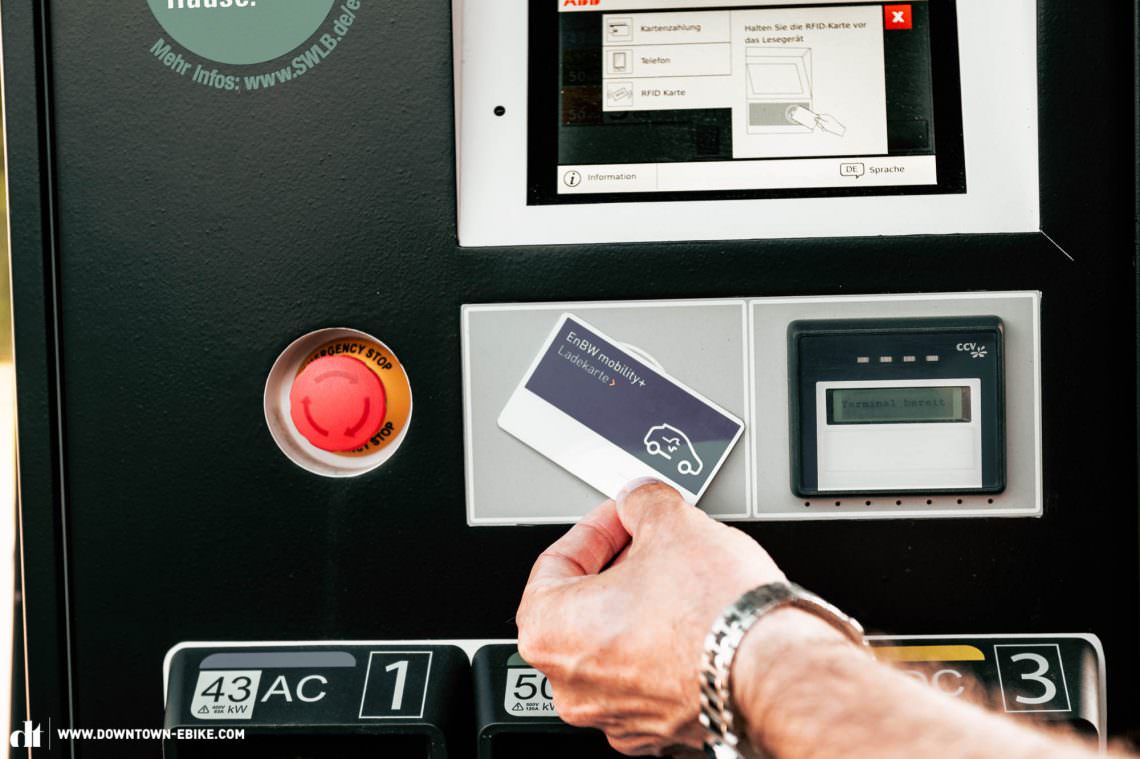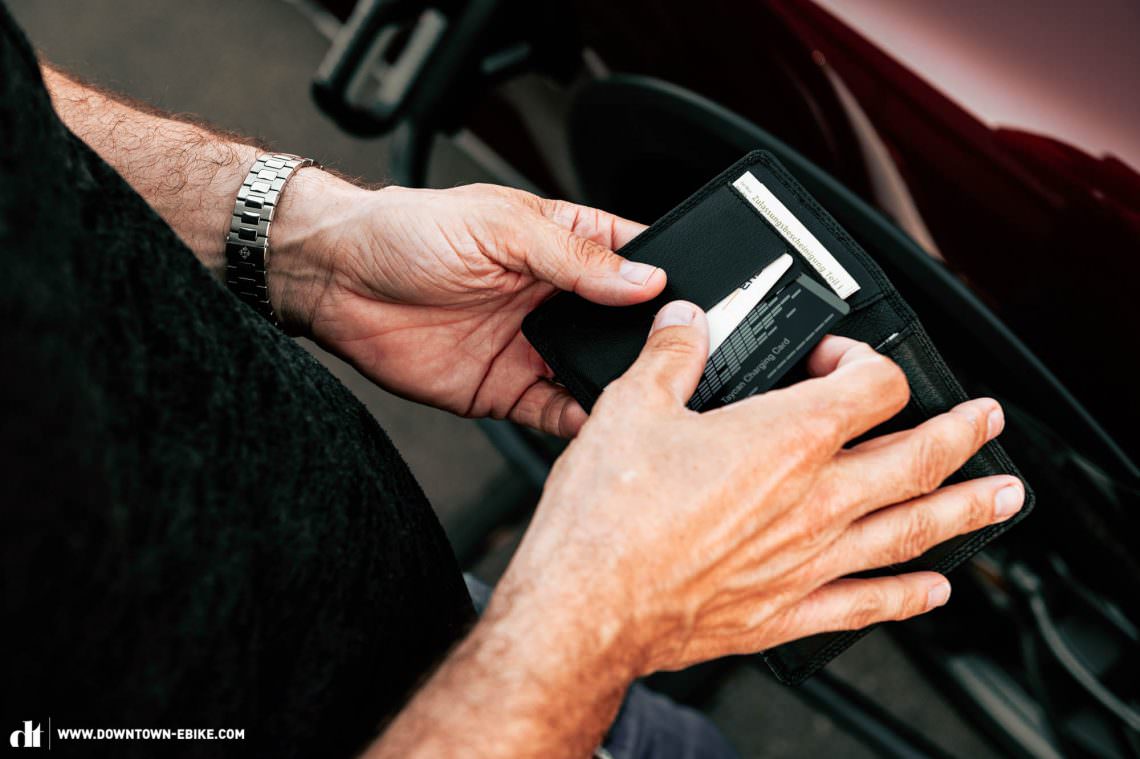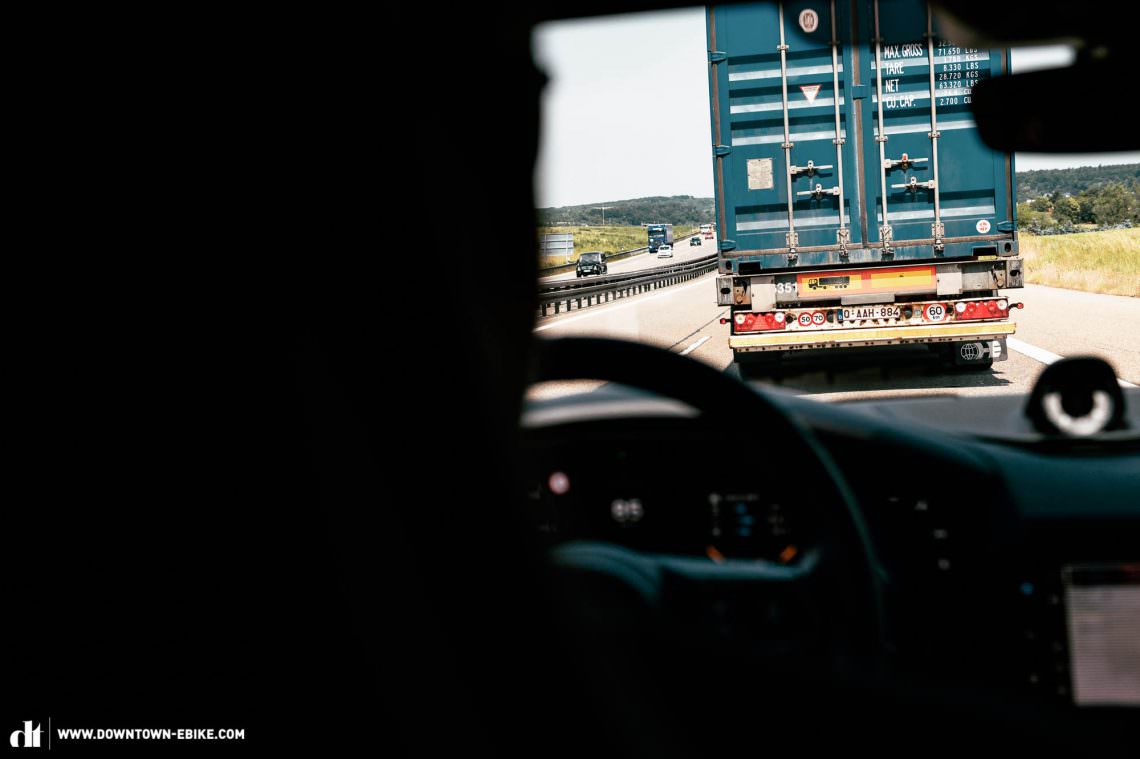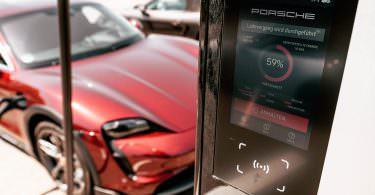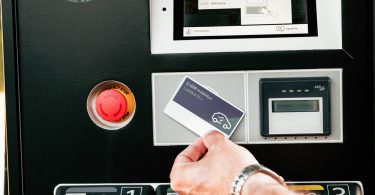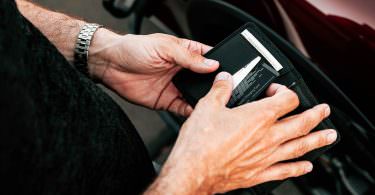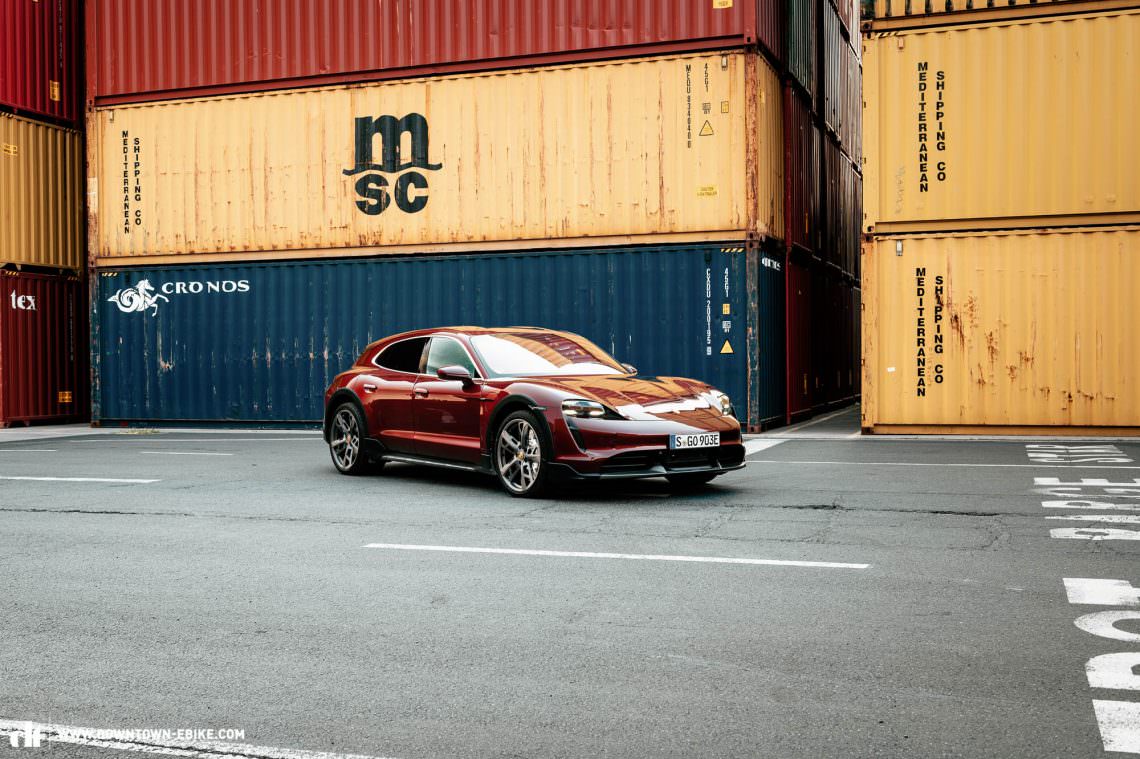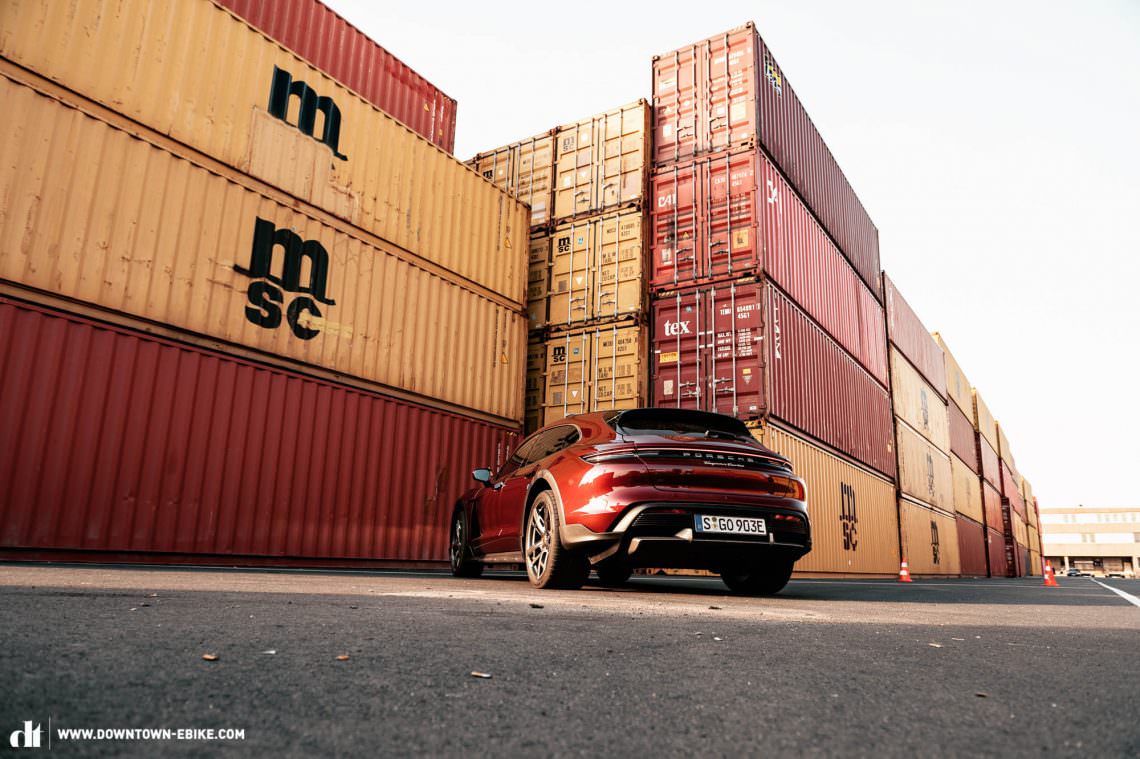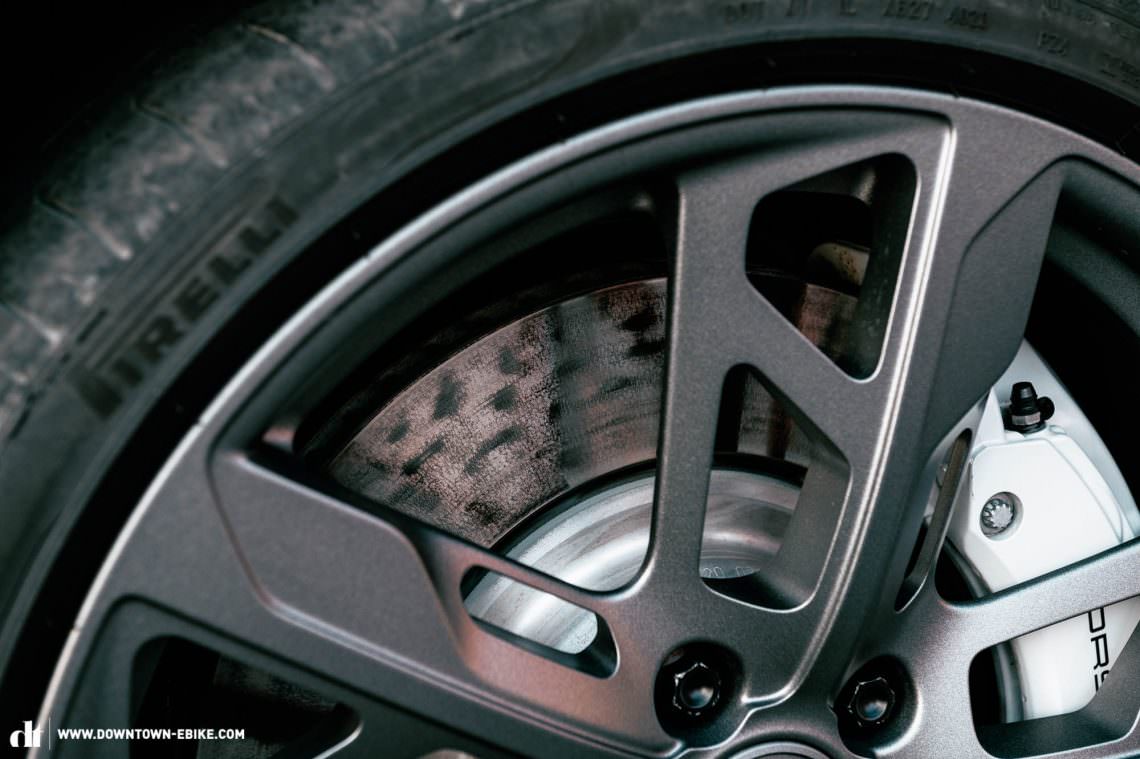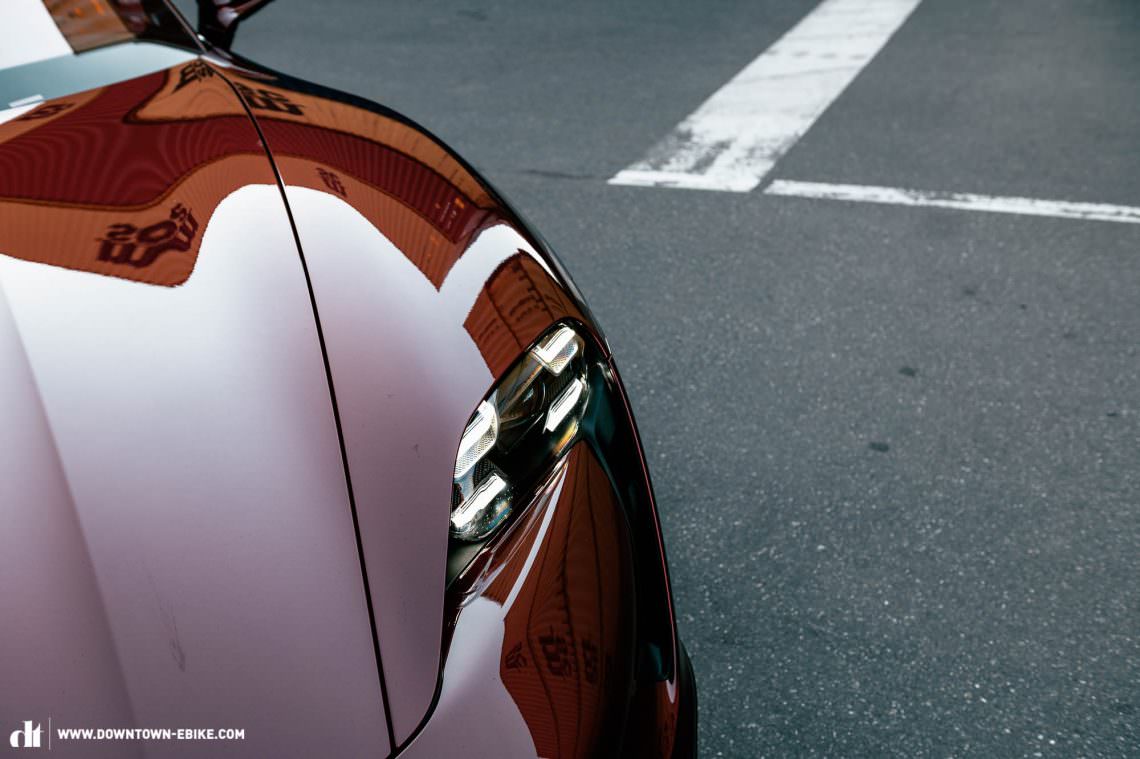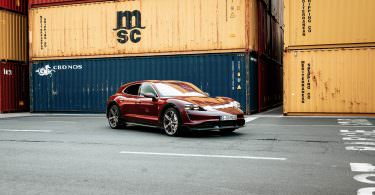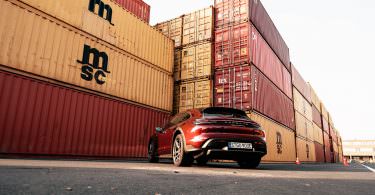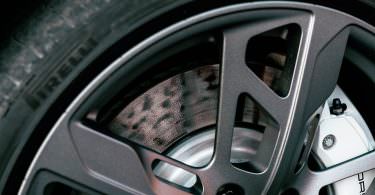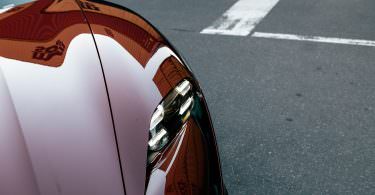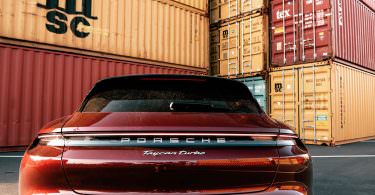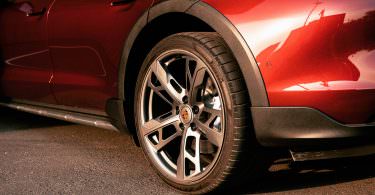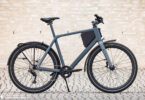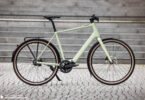A new driving experience, possibly benchmark performance and an almost schizophrenic versatility – with their latest electric car, Porsche aim to push boundaries and inspire a (sub)urban target group with an affinity for the outdoors. Can they deliver? We tested the € 190,000 Porsche Taycan Turbo Cross Turismo in everyday life, on the racetrack and off-road, offer some future-oriented insights and tell you whether society is ready for electric cars.
The German government are doing their best to make buying an E-car attractive with the help of subsidies, but the whole process isn’t completely straightforward and is faced with compromises and challenges. Manufacturers and consumers get preoccupied with countless half-truths and a greenwashing mentality, leading to both criticism and enthusiasm. In addition, electric cars enable and also require new applications and use cases. This new generation of E-cars brings with it a different set of criteria for buyers and considerations that go far beyond electric motors versus internal combustion engines. It’s time for a new understanding of the future of automobiles! Let’s go!
You can find all electric Cars in our big EV special “Which is the best electric car of 2023?“, where you can also check out our personal EV buyer’s guide – free of charge!
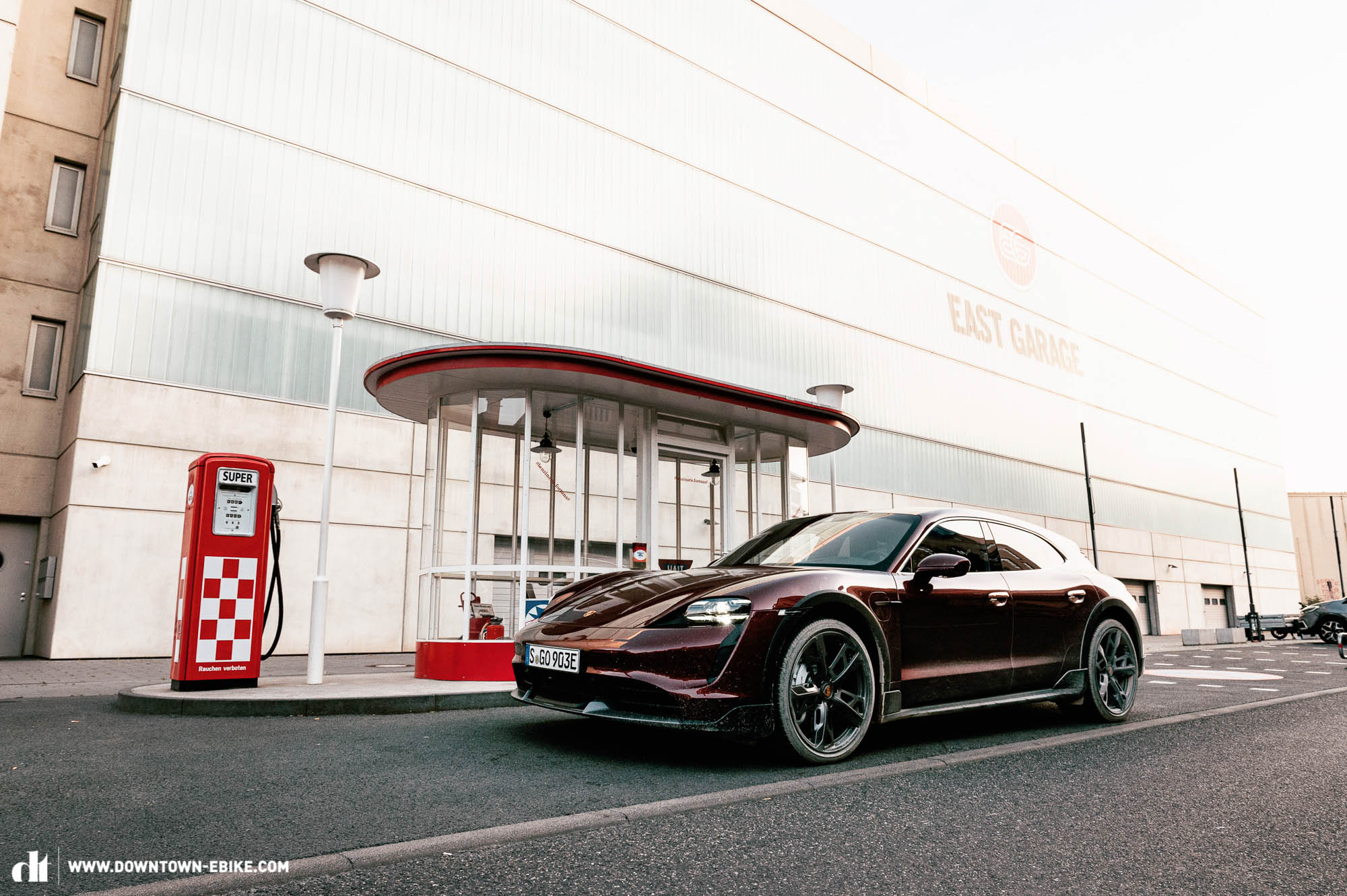
Table of content
- Electric pioneers, experts and E-car newcomers
- Traveling through time and space
- The vicious cycle of Top Trumps
- Cross Utility Vehicle – What use is the best electric car?
- Modus operandi – How do you want to drive?
- The race track performance of the Taycan Turbo Cross Turismo
- Hardware vs software in the Porsche Taycan Cross Turismo
- More safety and visibility in everyday life!
- How much storage space does the Porsche Taycan Cross Turismo offer?<
- The bike rack of the Porsche Taycan Cross Turismo
- Is the Porsche 911 dream dying?
- The myth of charging speed and battery size
- The key to effective charging with an electric Porsche<
- The battle for charging stations
- Would we buy the Porsche Taycan Turbo Cross Turismo?
- Is the world ready for E-mobility
As with most technology, you can get a glimpse of the automotive industry’s future by looking at the high-end market, where you’ll find new, innovative and usually very expensive technology being used. The € 190,000 Porsche Taycan Turbo Cross Turismo could set multiple benchmarks, showing the enormous potential of E-mobility as well as the significant challenges and problems it faces. For us at DOWNTOWN, it serves as the perfect blueprint for the future of E-mobility and to find out whether society is ready for electric cars.
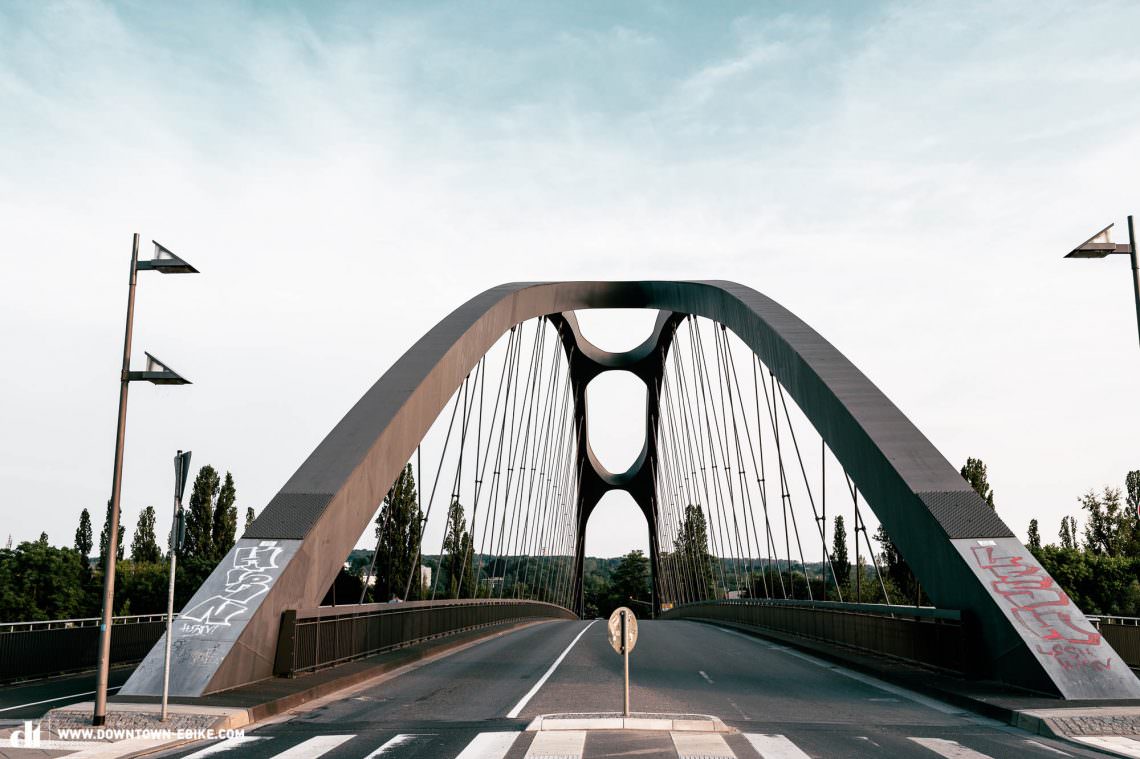
Many manufacturers are in the throes of launching their first serious generation of fully electric cars. That will require breaking new ground (for them) sooner rather than later in more areas than just the powertrain, connectivity and overall ecosystem. The manufacturers’ sales models, their range of services, their infrastructural commitments and technological standards are also undergoing exciting transformation. Even more critically, large investments are required at the communication and marketing level to debunk myths and foster a new understanding of individual mobility amongst industry stakeholders, in politics and, of course, with consumers.
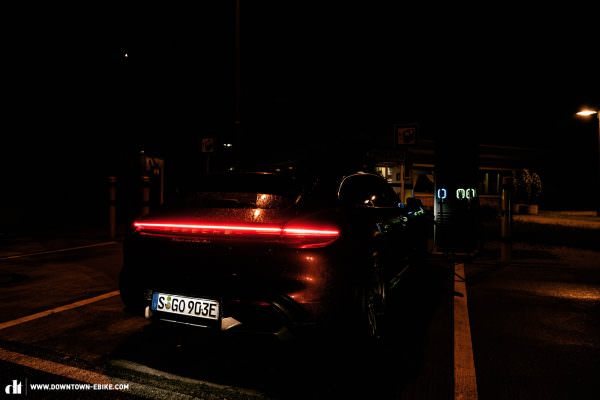
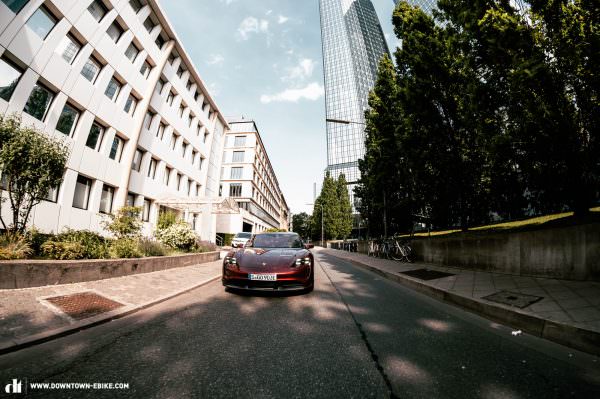
DOWNTOWN – Our agenda 2030
Our mission at DOWNTOWN is to actively shape urban life and urban mobility. This means that we have to look beyond electric and cargo bikes, making cars just as much a part of our journey. We want to offer inspiration for new possibilities and lifestyles, question current developments, provide inspiration and set trends to make the cities and suburbs of this world more liveable, more people-centric, more exciting and simply better. Without any greenwashing, being neither dogmatic nor hypocritical, but having a realistic, pragmatic and tangible approach. And of course, we want to do so with enthusiasm and have fun while we’re at it, otherwise life would be pretty boring, wouldn’t it?
Not only do all of the popular car manufacturers aim to have their fleets fully electrified by 2030, they have to. After all, the EU is planning to implement heavy regulation on the combustion engine market. According to the “Fit for 55” concept, all new vehicles on the road should be completely emission-free by 2035. It should be obvious that by 2030 consumers in the market for a new car will no longer be asking themselves whether to buy an E-car, asking instead which E-car is right for them. That’s where we come in. In answering this question, we want to offer added value with real-world tests, just like our other magazines have been doing in the bike sector for over 10 years. In doing so, we supply you with the most important details and background information so that you can make the right decision, avoiding bad investments and unnecessary annoyances.
While an ebike can be the perfect mobility solution for some, it isn’t the best answer for every situation and every need. We’re convinced that the solution to (sub)urban mobility challenges can’t be found in an either/or approach. Instead, they can be found in a holistic combination of concepts that will also increase our quality of life. Provided that the bike and car industries, which have historically gone their own ways, can come together with politicians to create a new understanding of mobility.
Electric pioneers, experts and E-car newcomers
Back to business: if anyone were to buy a Taycan, it would be our test driver Erik. Indeed, he was one of the first to do so! As a family man, outdoor enthusiast and Porsche fanatic, he has bought over 200 Porsches and countless other luxury cars for his company and understands the real needs and problems of a demanding (sub)urban clientele.
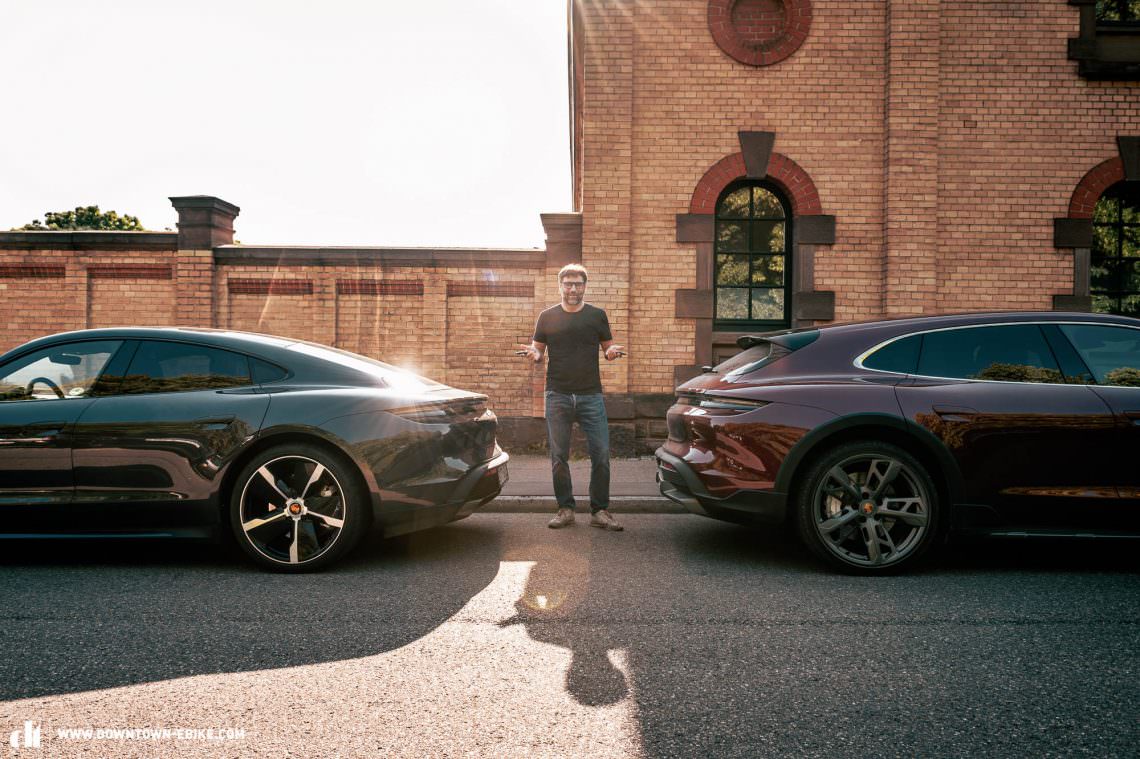
Erik didn’t have to think twice about becoming one of the first to own a Taycan Turbo for everyday use. He is an early adopter and electric car pioneer who has been using the most varied and exciting electric cars in his day to day life for over 10 years. His own Taycan Turbo has covered more than 12,000 electrically powered kilometres and he’s had countless experiences on European roads. Just like a large part of our DOWNTOWN editorial team who have driven a wide variety of electric cars, from the Tesla Model X, S and Jaguar I-Pace to the Mercedes EQA, Smart E and BMW i3, to numerous hybrid models. That said, the trick isn’t to drive as many cars as possible but to adopt a holistic test philosophy and an understanding of the target audience and their real needs. At the same time, we were really excited to see what questions the electric car newcomers in our editorial team would ask and what impression the Taycan Turbo Cross Turismo would make on them!
Traveling through time and space – The new driving experience and dimensions of the Porsche Taycan Cross Turismo
Schizophrenic – there’s no better adjective to sum up the driving experience of the Taycan Cross Turismo. We don’t mean it in a negative sense, because this Porsche is able to combine opposites, completely changing its character atThe fact is that with the Taycan Turbo Cross Turismo, your perception of speed and its dynamics change. It’s a car that makes you drive so much better. Depending on your preference, the sci-fi driving experience can be intensified with
the Porsche Sport Electric Sound feature. This artificially generated sound is linked to the dynamics of the motors to provide a futuristic motorsport feeling without six-cylinders or twin turbo chargers! As a result, acceleration and braking can also be experienced acoustically, mentally beaming you through urban canyons like the Starship Enterprise. Besides immersing the driver in the experience, pedestrians and other road users, whether on bicycles or in cars, can hear you coming, increasing safety!
the push of a button or pedal. It can mutate from a family car that glides along almost silently to a snappy and responsive racing car in an instant. Despite its curb weight of over 2.3 t, it matches or even beats the current Porsche GT3 when it comes to acceleration and power while also being much easier to control. With the Taycan Cross Turismo, even your average Joe can experience the driving sensations for which you would otherwise have to be called Walter Röhrl. The nice thing about it is that it doesn’t disturb your neighbours or surroundings, allowing you to glide along silently, apart from the rumble of the wide tires on their massive 21″ rims, or beam yourself away with help of Launch Control and Overboost. When you do, the other cars look like they’re standing still – unbelievable!
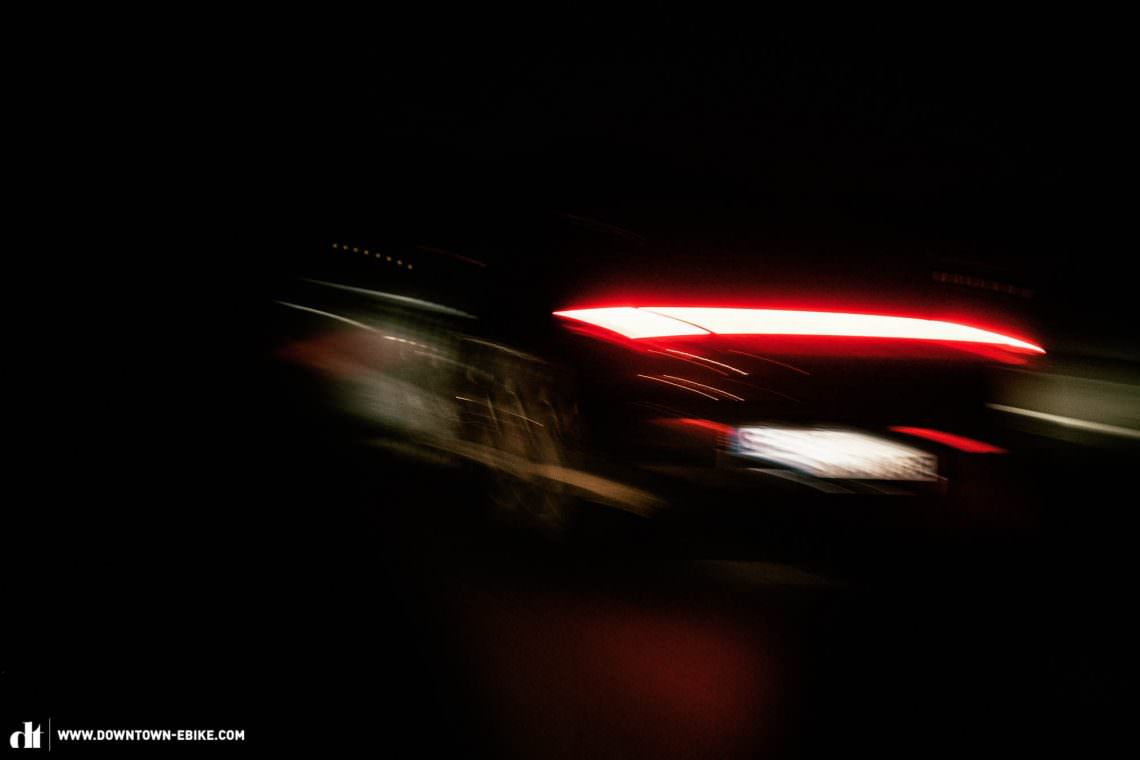
The fact is that with the Taycan Turbo Cross Turismo, your perception of speed and its dynamics change. It’s a car that makes you drive so much better. Depending on your preference, the sci-fi driving experience can be intensified with
the Porsche Sport Electric Sound feature. This artificially generated sound is linked to the dynamics of the motors to provide a futuristic motorsport feeling without six-cylinders or twin turbo chargers! As a result, acceleration and braking can also be experienced acoustically, mentally beaming you through urban canyons like the Starship Enterprise. Besides immersing the driver in the experience, pedestrians and other road users, whether on bicycles or in cars, can hear you coming, increasing safety! Is this what the future feels like? Yes! But is that enough to go down in the history books as the solution to the future of mobility? No.
Are you playing or are you driving? The vicious cycle of Top Trumps
To find out what the Taycan Turbo Cross Turismo is capable of, you have to embark on a long search. If you browse the Porsche website, you’ll be inundated with specs and technical details like price, acceleration, top speed. But does any of that really matter? There’s little to glean from these facts about the car’s actual usability.
Meanwhile, this epochal shift towards E-mobility is the perfect opportunity to introduce motorists to the topic in a completely different way, to get generations of car freaks to rethink, to create a new awareness and to focus on what actually matters and what offers real added value in everyday life. In fact, the automotive industry is now faced with a dilemma similar to the one in which the ebike industry is still stuck ten years after first emerging. Which is the most powerful motor? How far can I get on one charge? Does this ebike come with a bigger battery? The questions that car Top Trumps passed on to the ebike industry have gone full circle, because the fact that E-car buyers ask the exact same questions as ebike customers is rooted in history!
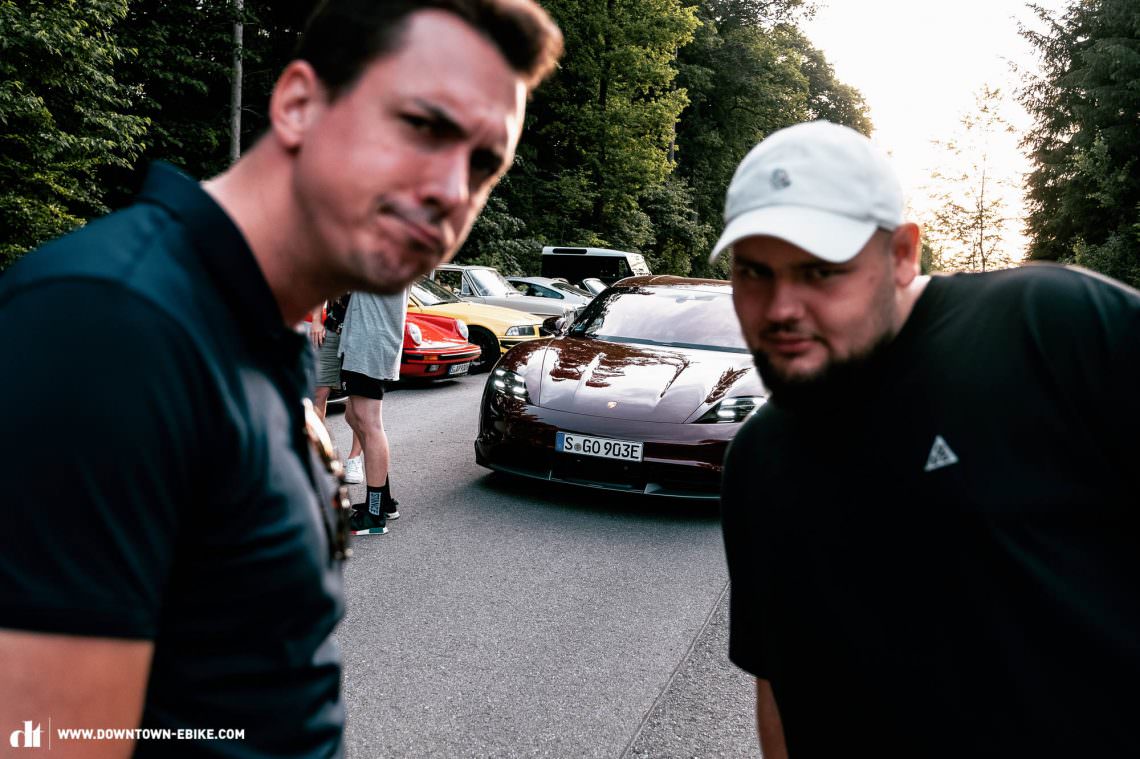
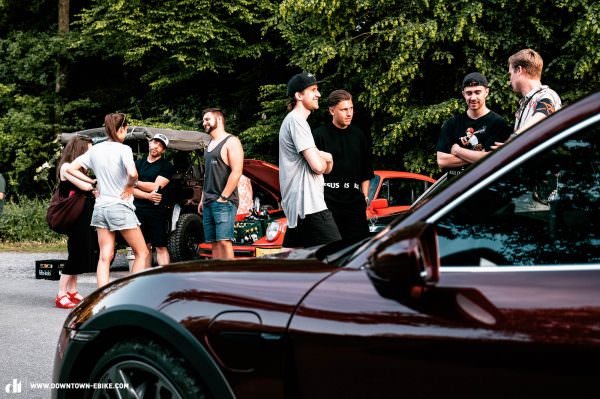
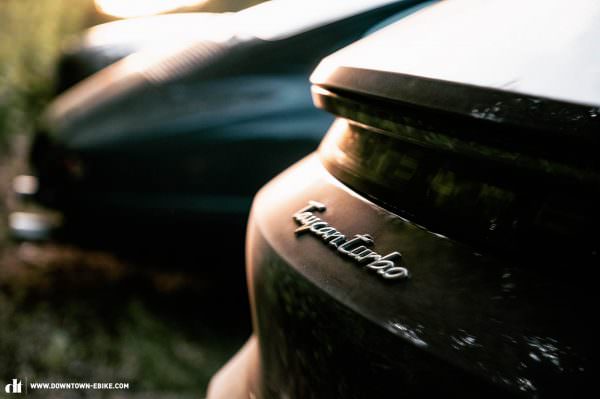

The misery that has shaped the perception of automobiles for well over half a century and continues to shape it, was perfectly expressed in 1952 when Werner Seitz invented “Autoquartett” (Top Trumps based on cars) for card game company ASS. There is no question about it, the competition for superlatives such as horsepower and engine displacement is an entertaining and exciting pastime but continues to reinforce the wrong priorities, dominating debates in pubs as well as the websites and brochures of many manufacturers, including Porsche! It’s the same game even with the media. You give customers what they want, even if the challenges we’re facing require us to rethink our approach! Not just superficially but to its very core. Of course, many people want tangible data and facts that they can compare and discuss but conveying only these values no longer does justice to the requirements, challenges and potential of modern means of transport. Comparability for the sake of comparability is like bullshit bingo – a lot of fanfare, but nothing to support it! Technical specs given as numbers can be impressive but they often lead to incorrect conclusions. They often convey the wrong picture and are only a small part of the whole picture. This applies to charging times, acceleration, horsepower and prices, as well as consumption values. So what is it that really counts?
Cross Utility Vehicle – What use is the best electric car?
Porsche categorise the new Taycan Cross Turismo as a CUV and claim it to be the sportiest and best electric car in its segment. CUV stands for Cross Utility Vehicle, which means that besides just mobility, the Taycan Cross Turismo should also offer a wide range of practical uses (utility) for those who drive it. This places significantly more demands and higher expectations on the Taycan Cross Turismo than the Taycan, which is classified as a sports sedan. The electric car produced in Zuffenhausen needs to perform just as well in Gravel mode off paved roads as it does in Sport Plus mode on the racetrack, and everywhere in between. As a prestigious executive-level company car, as a family van with sufficient storage space, as an adventuremobile with ebikes on the rear rack or kitesurfing equipment in the trunk and, of course, as an often positively perceived status symbol. This versatility can, if used correctly, make for a universal all-rounder that, as a one-car solution for the entire household, meets many different requirements and needs. Bring the kids to school in the morning, shoot off to a business meeting at lunchtime and, with a roof tent attached and bikes on the rear rack, head off on a weekend adventure. Sounds tempting? It is. Without a doubt, Porsche are pushing the boundaries with the new Taycan Cross Turismo, available in its basic configuration for just under € 100,000, combining opposing areas of application and creating the best electric car in its segment in terms of driving performance. But is that enough to deliver in everyday life?
The best car is only as good as it is useful. With E-cars, there are other factors that determine between good and bad, everyday practicality and impractical beauty. E-cars don’t only contend with significantly worse infrastructure than combustion engines but, above all, with themselves. A holistic digital ecosystem for the interrelated topics of charging, driving style and navigation is a major challenge that so far only Tesla have largely mastered. Since no charging process is the same, the battery management system has to take countless factors into account, including the provider of the charging station, battery temperature and charge status. Smart charging is the keyword, which requires intuitive integration into the navigation system of the electric car.
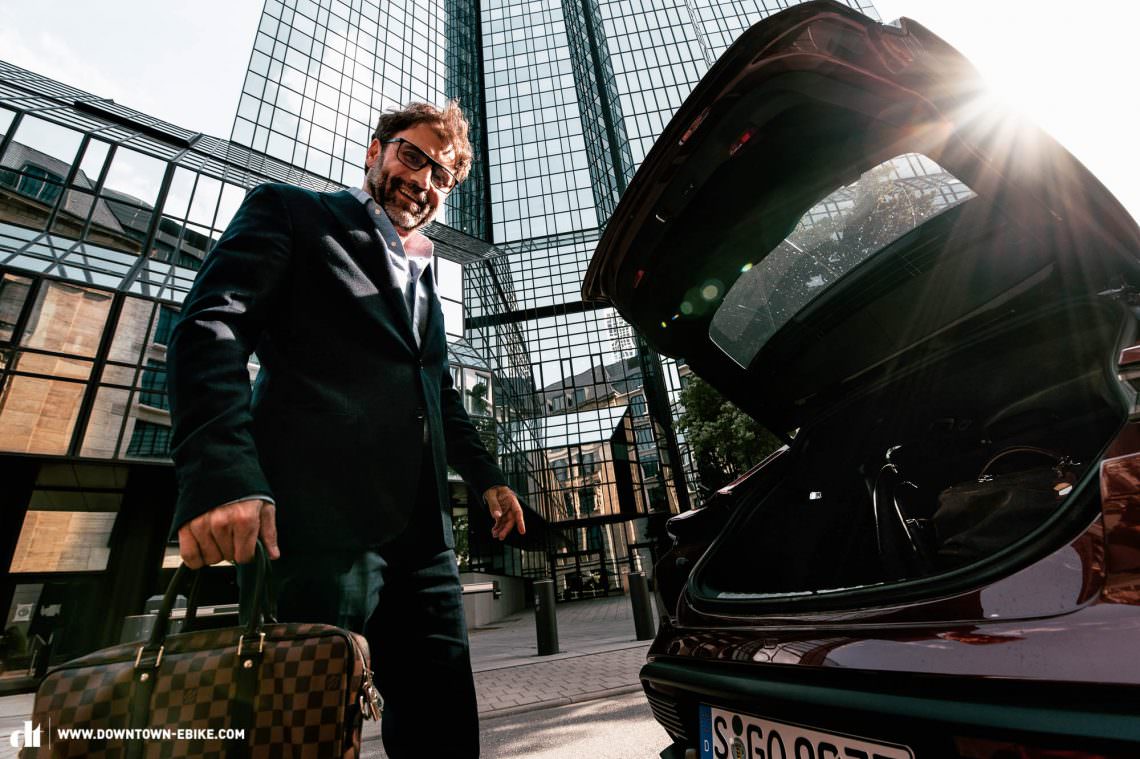

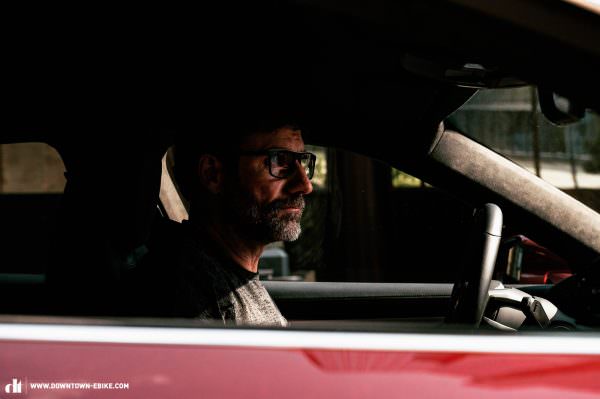
We know from experience that you can buy the best electric car and still get the short end of the stick. The real problems only show up in everyday use. After all, it has long since ceased to be just about the car, neither purely about its practical use or its driving pleasure. E-cars need a holistic concept and a new understanding of individual mobility, among customers, manufacturers and, of course, politicians!
Theory vs. Reality: The Taycan Turbo Cross Turismo on test
After around 1,000 kilometres through winding city centres, slow city traffic, hitting over 250 km/h on the autobahn in the rain, driving at night and in dense fog, drifting over gravel and racing on the Hockenheimring track, we can tell you whether the Porsche Taycan Turbo Cross Turismo really is as versatile as it claims to be and why it’s likely to kill many childhood dreams of a 911.
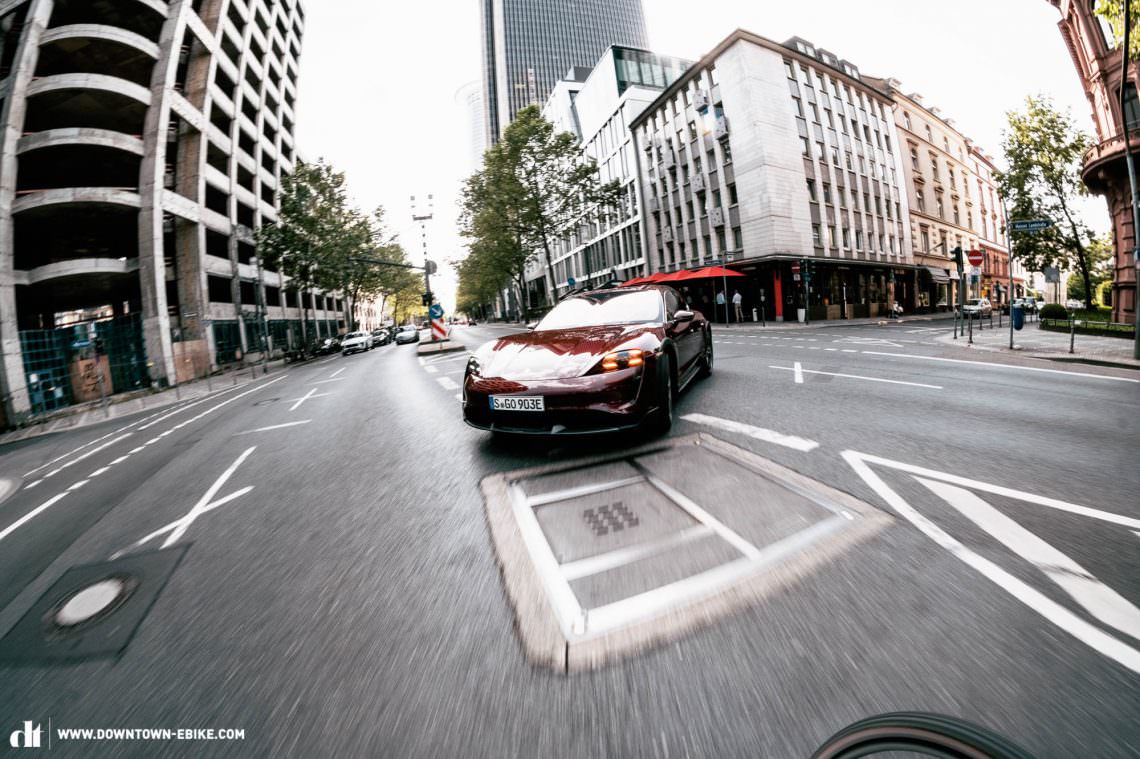
While many discuss theoretical performance specs, we think it’s much more important to deal with what you can experience for yourself and what you will actually benefit from. The Taycan Cross Turismo is not a standard car, nor is it a supercar that you own just for the sake of owning it or to enjoy on an occasional Sunday drive. It’s a versatile electric car for everyday use. That said, our days aren’t all the same and some can be really tough on both driver and vehicle! To properly understand a car, you have to explore its limits as well as your own requirements. We did just that.
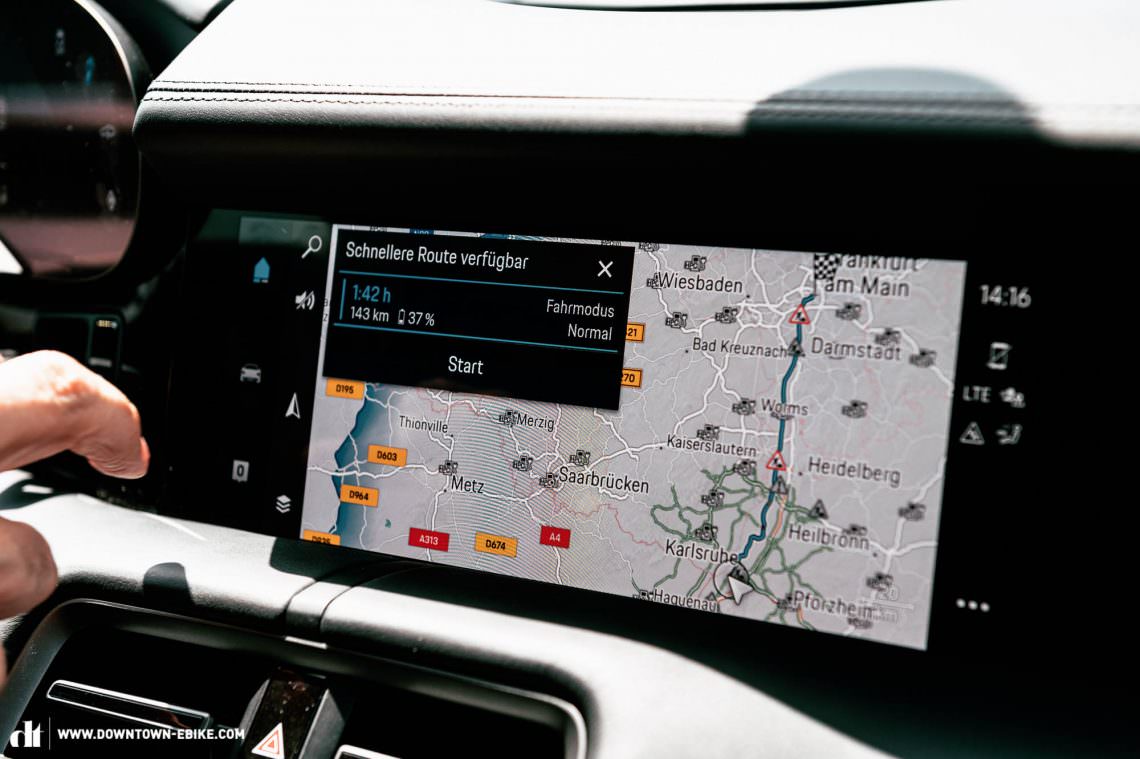
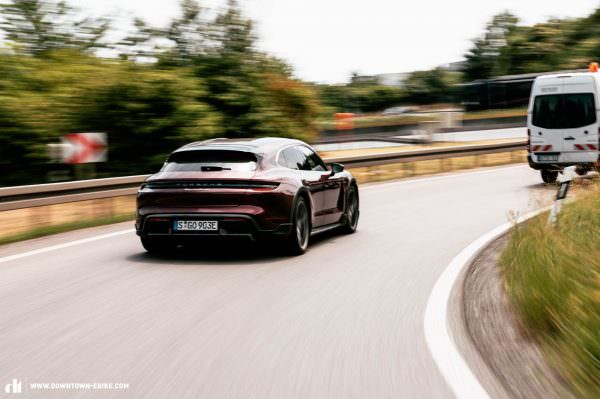
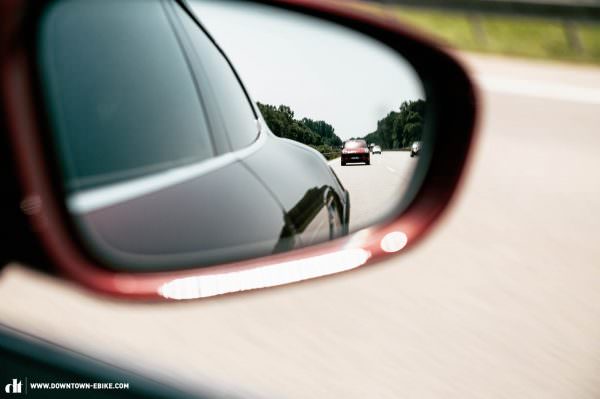
Modus operandi – How do you want to drive? The driving modes and regenerative braking of the Porsche Taycan Cross Turismo
The Taycan has five driving modes, four of which can be selected using the dial on the steering wheel: Range, Normal, Sport and Sport Plus. Gravel mode has to be selected separately on the centre console. In Sport and Sport Plus modes, the chassis is significantly firmer and lower to the ground, which is particularly noticeable through corners, where the lightning-fast adaptive suspension makes a big difference. The braking and its regeneration behaviour also change significantly in these modes, which is perfect for aggressive driving manoeuvres. In Sport mode, braking leads to a distinct shift in balance, which is particularly advantageous on winding tracks though it also requires a certain level of driving skills. By contrast, in Normal mode the car just glides. This is especially useful in everyday life as it makes driving in stop-and-go rush hour traffic much more pleasant. Generally, you don’t notice whether the car is harvesting power or also using the brakes to slow down. In contrast to many other electric cars, the Taycan is designed to roll and only starts recuperating energy when you actively step on the brakes. Speaking of regeneration, up to 290 kW can be fed back into the Taycan’s battery when braking. For comparison, a Tesla Model S only manages up to 60 kW. In normal operation, around 90% of the braking of the Porsche Taycan Cross Turismo takes place purely through regeneration. It is only when more braking power is needed that the hydraulic disc brakes are activated in addition. What does up to 290 kW mean? When braking from 200 to 0 km/h, the Taycan Cross Turismo should generate enough electrical energy for an additional range of up to 4 km, according to Porsche.
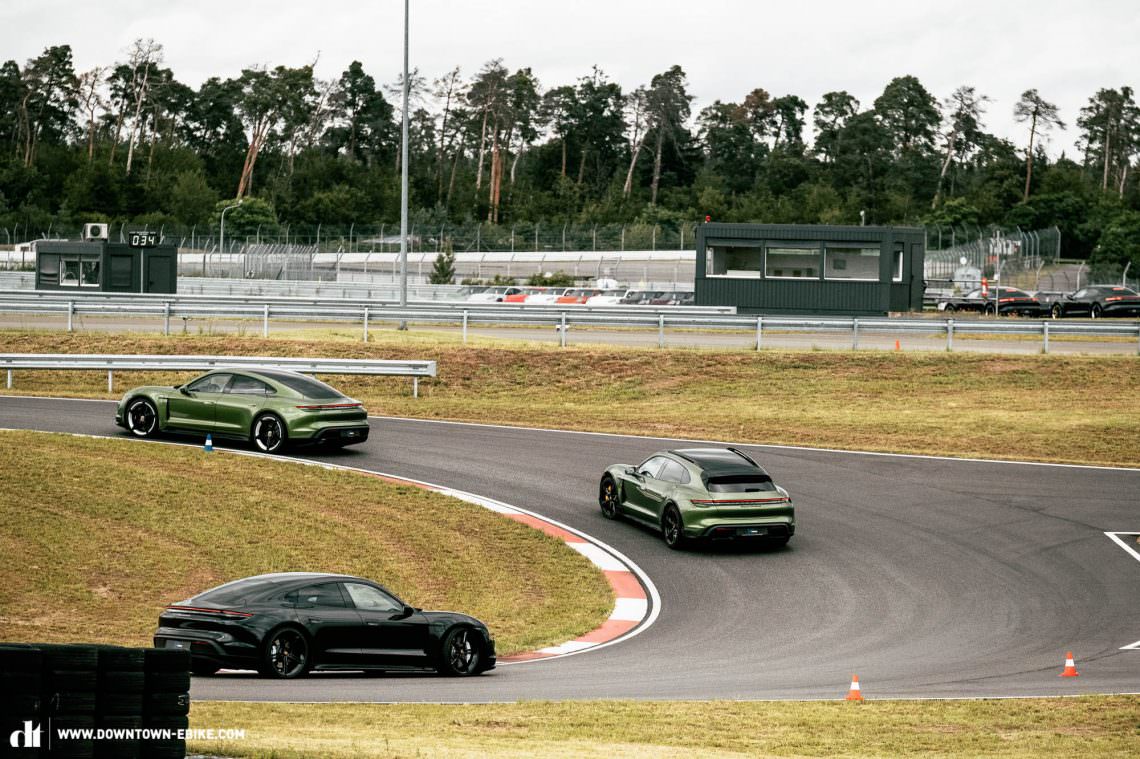
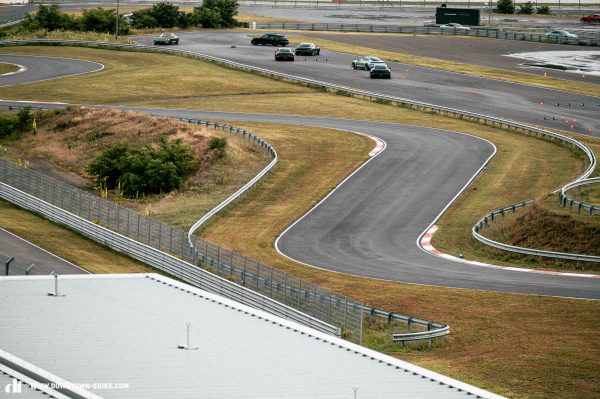
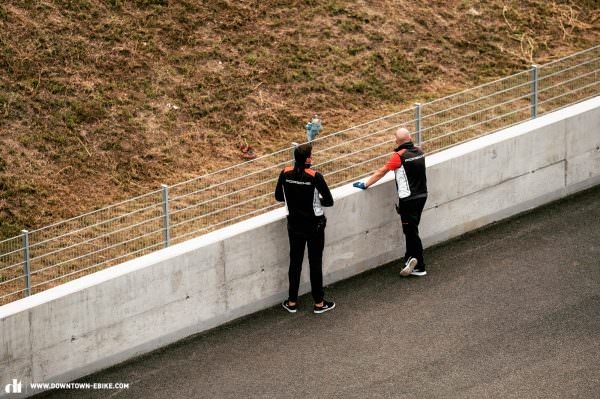
Note that it’s not the selected mode that has a significant impact on your range, but primarily your driving style in combination with external influences such as the topography of your route, the terrain, weather and more. Therefore, if you switch through the individual modes, the Taycan only shows a range difference of around 10 km per mode. If you get 340 km in Range mode, you will only achieve 313 km in Sport Plus. However, you can drive economically in Sport Plus mode too!
A clear USP of the Cross Turismo is Gravel mode. It doesn’t turn the E-car into an off-road vehicle, but it allows you to blast down bad roads without worrying about ground clearance. Off-road is fun, even if you’re not riding at top speed! With the off-road package, the Cross Turismo is already 30 mm higher than the Taycan sports sedan and with Gravel mode activated, the chassis is raised by a further 20 mm. The Smart Lift feature relies on the same technology and is intended to prevent scraping the bumpers on the ground when driving over speed bumps or up a steep car park ramp. The GPS coordinates are logged so that the Porsche raises itself automatically when you reach them.
Maximum power, maximum control? The race track performance of the Taycan Turbo Cross Turismo and what that means for everyday life
With its 5 seats plus storage space and corresponding dimensions, the Taycan Cross Turismo is a hulk on the racetrack. In direct comparison with the Porsche 911, it’s much easier to drive though. There are good reasons for this: thanks to two electric motors, power delivery is instant and can be modulated much faster and more finely than with a combustion engine. This makes the Taycan extremely responsive! As we all know, power is nothing without control. The Taycan Turbo Cross Turismo has a lot of power but even more control. Even in the wet, as we were able to find out safely on the artificially watered skid pan!
There are several factors that contribute to the car’s outstanding handling, the belligerent traction and the secure way it sits on the road. First, there is the excellent weight distribution, then the extraordinarily low center of gravity, which is even lower than the 911 thanks to the clever positioning of the 650 kg battery. The Porsche Stability Management System significantly increases the safe threshold of stability at the limit and the rear-axle steering increases both agility and stability. In everyday life, that rear-axle steering contributes to a noticeably smaller turning circle. Aim for the ideal line and push through – the Taycan Cross Turismo is a pleasure to keep on track, super composed yet light-footed in its response!
Put your foot on the accelerator in Sport Plus mode and the acceleration is often quicker than your own reactions. The immediate onset of up to 850 Nm of torque forces you back into your seat – it’s good that our Taycan Turbo Cross Turismo comes with the 18-way adjustable sports seats, which adapt to the vehicle’s dynamics while driving to provide excellent support.


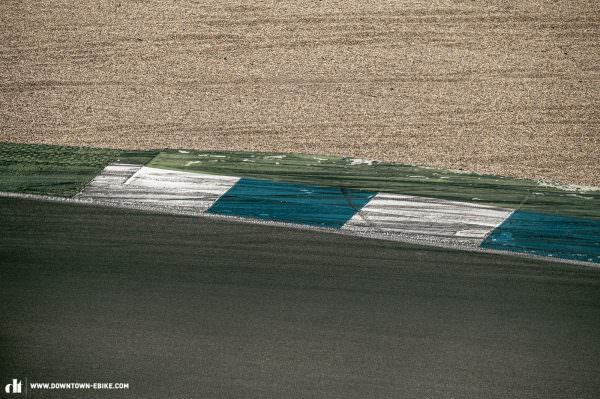
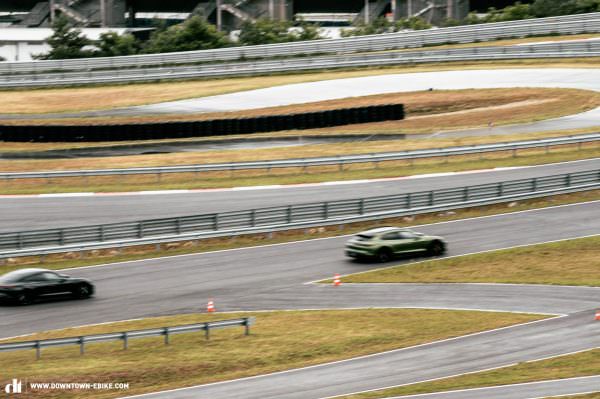
Thanks to its intelligent thermal management, the Taycan achieves an exceptionally high continuous output. The Porsche can accelerate successively without a significant drop in performance, while many other E-cars throttle their power relatively quickly to prevent the electrical components from overheating and protect them from thermal stress.
The Electric Sport Sound in Sport Plus mode underlines the dynamic driving experience acoustically. In combination with the shifting of the 2-speed gearbox at the rear (at around 90 km/h), it creates a motorsport feeling similar to that of combustion engines, though with a Star Trek-like warp speed sound. This makes accelerating with 680 HP and up to 850 Nm in Overboost mode with active launch control even more fun – our stomachs are still settling. Just awesome!
You get really cheeky with the Porsche Taycan!
The superiority of the Taycan’s performance boosts your self-confidence on the road, allowing you to be significantly more spontaneous and always tempting you to unleash its power. The Taycan makes you feel so invincible that you get cheeky. See a small gap to overtake? No problem with the Taycan Turbo Cross Turismo! Our office dog Henry was allowed to cruise through the Black Forest in the boot of the Cross Turismo with his 64-year-old owner, DOWNTOWN editor Manne Schmitt, and had to put up with a number of rapid overtaking manoeuvres. The same goes for his wife Andrea in the passenger seat. Manne quickly realised that doing so excessively would quickly sour the mood with your head slamming into the headrest every time you overtake. We recommend neck muscle training for the Taycan Turbo! If you want to see what the Taycan Cross Turismo is capable of, it’s best to do so alone or with a steadfast companion. Unleashing its full performance requires you to secure all cargo and can take its toll on passengers and any four-legged friends with you in the CUV.
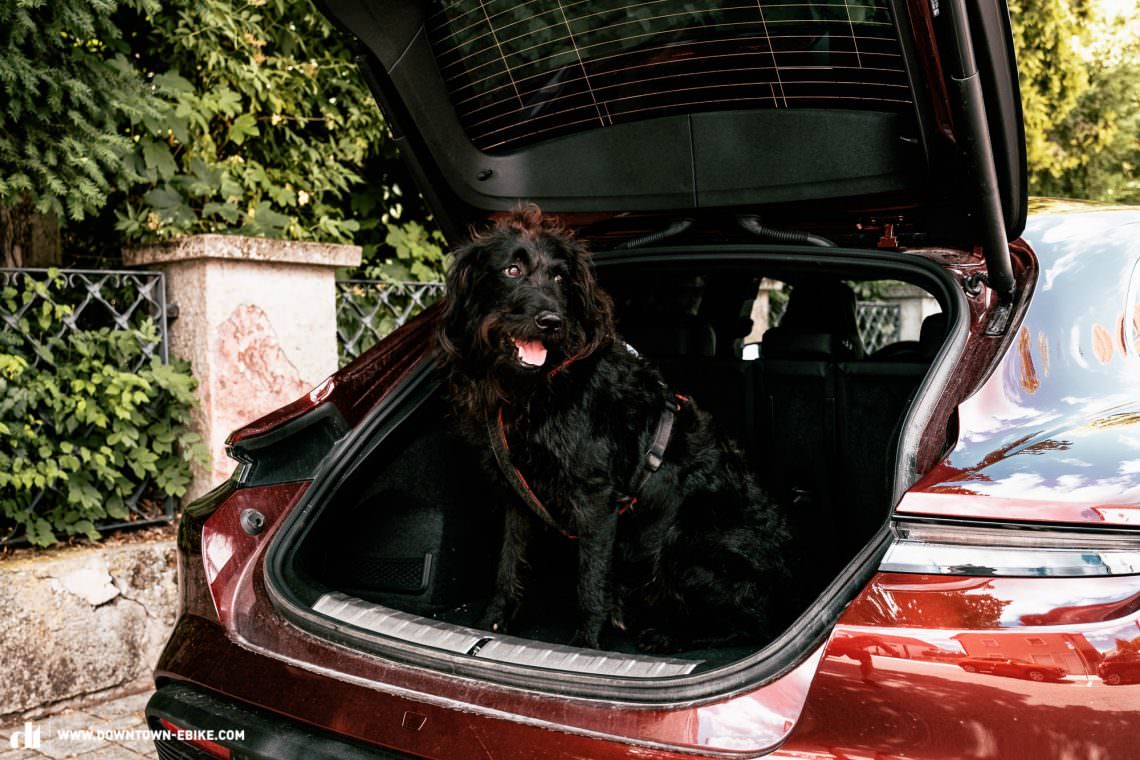
Connected to the future? Hardware vs software in the Porsche Taycan Cross Turismo
Regarding the digital ecosystem, Porsche still have a lot of room for improvement. While there is still a lot of discussion about the perfect trim – and yes, the Taycan Cross Turismo is excellently finished – software makes the decisive difference in terms of usability. This starts with calculating relevant real-time data, continues with the seamless integration of important functions and ends with a reliable and intuitive interface. Charging and navigation should be treated as a combined unit in E-cars and Tesla have been leading the way here for many years! So far, no electric car that we’ve driven can hold a candle to Elon Musk’s models in this regard. Too bad! The fact is that software is one of the greatest challenges in the future of the automotive industry and decides whether a car that might be the best in terms of driving dynamics is actually any good i.e. usable.
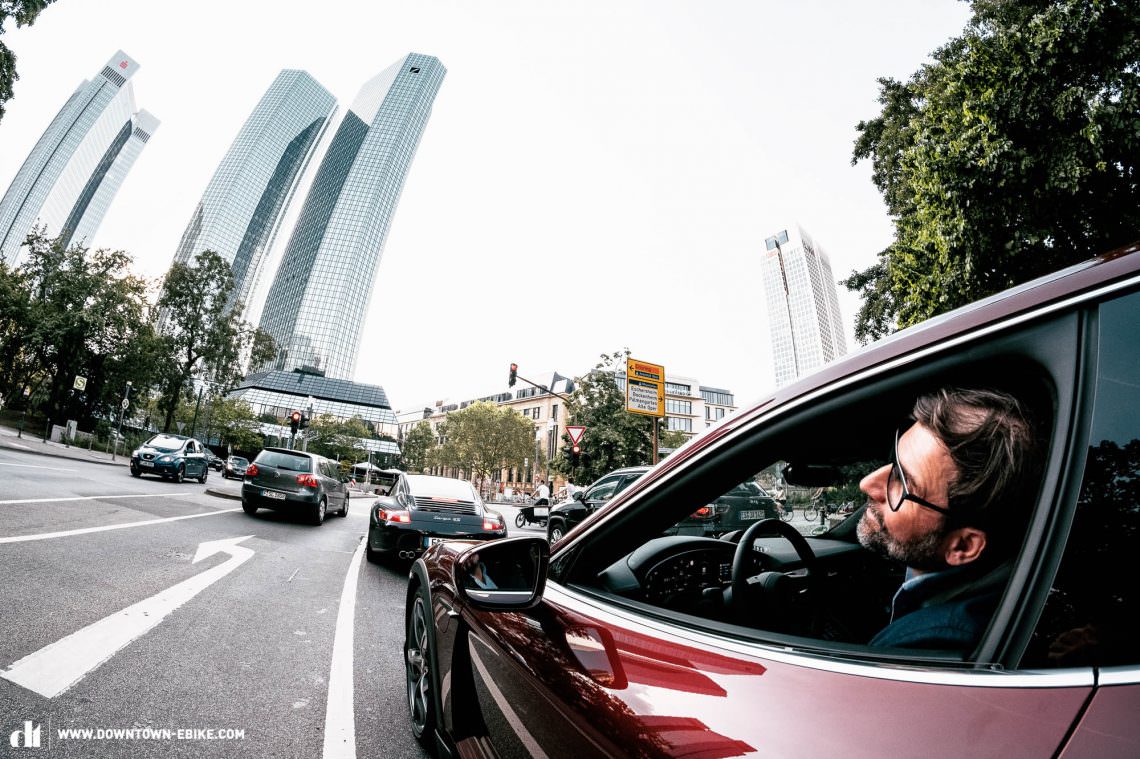
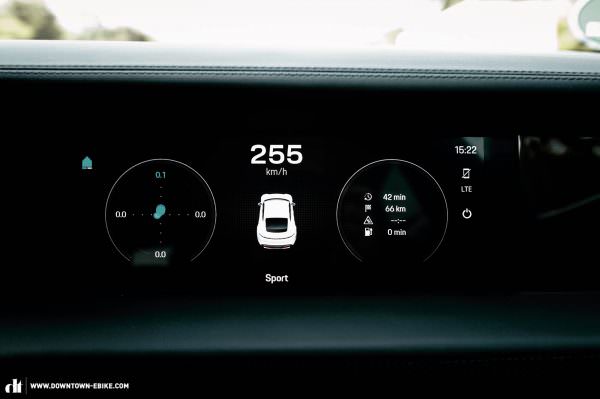
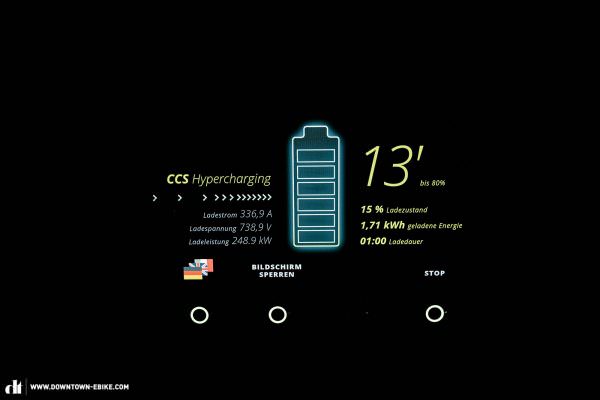
Unobstructed view? More safety and visibility in everyday life!
The Taycan shouldn’t just deliver on the Hockenheimring and on hairpin bends in the Black Forest but in everyday life too. A number of collision prevention technologies provide a significant increase in safety, such as the Park Assist and the Warning and Braking Assist, which also recognises pedestrians on foot or on their bike. Particularly when manoeuvring backwards in the city, these mechanisms can help intervene and effectively prevent collisions. If you want to open the door and the car registers someone approaching on a bicycle, the assistive technologies also intervene. Brilliant!
But it’s not all good. When driving in the blazing midday sun, the leather dashboard is reflected in the windshield. This might seem a small thing but it is annoying and, above all, exhausting and tiring for the eyes. This is the case with many cars and we don’t understand why manufacturers don’t resort to less reflective material such as Alcantara. After all, a clear view greatly improves safety, comfort and performance when driving!
We are fans of panoramic roofs, even if they are heavier. They ensure a much more open and spacious feeling inside the vehicle and, in the case of the Taycan Cross Turismo, provide around two additional centimetres of headroom. Our test vehicle wasn’t equipped with it but after testing a second model, we can wholeheartedly recommend the € 1,600 upgrade.
How much storage space does the Porsche Taycan Cross Turismo actually offer?
Do you know what a frunk is? The Taycan uses the space normally taken up by the combustion engine differently. Since the boot (or trunk for the US) is positioned at the front, it’s called a frunk. There is a large boot at the rear and another small boot up front, just like the 911 with its rear-mounted engine. The Taycan’s frunk has a capacity of 84 L, enough for a crate of beer plus hand luggage. The frunk of the 911 offers an even bigger storage volume of 128 L. The estate body of the Taycan Turbo Cross Turismo CUV offers only around 40 L more volume than the Taycan sedan, whereas the normal 4 or 4S Cross Turismo has 80 litres more. What does this mean? Compared to the Taycan sedan, the Taycan Cross Turismo CUV can store an additional bag the size of typical hand luggage, depending on the dimensions. If you don’t need it for passengers, the rear bench seat can be folded down to increase storage capacity to 1171 L. And if that’s not enough, you can buy a box for the roof approved for speeds up to 200 km/h, with a capacity of either 320 or 520 L for € 773 or € 860 respectively. For comparison, the open luggage space behind the front seats of a 911 has a capacity of 264 L, which can accommodate several weekend bags or two crates of drinks.
Let’s go biking? The bike rack of the Porsche Taycan Cross Turismo
There’s an optionally available rear bicycle rack for the Taycan Cross Turismo, which costs € 1,785 plus € 487 for the installation of the special mount since the design of Taycan doesn’t accommodate a trailer hitch. That’s quite a hefty surcharge. The bike rack was developed specifically for the Cross Turismo, is designed for two bikes, is certified for speeds of up to 130 km/h (like racks from Thule) and has a maximum payload of 50 kg. As such, the Porsche will happily transport two average ebikes, though SUV eMTBs like those from Riese & Müller start getting a bit too heavy. Unfortunately, since the rear rack wasn’t yet available at the time of testing, we can’t tell you how it performs.
Is the Porsche 911 dream dying?
New technologies open up new possibilities and manage to combine contradictory properties and use cases, especially in the case of electric cars. So, the next time you have an argument with your better half about which car to buy, remember, you don’t have to decide between a sports car and a family van. You can have both. The Taycan Cross Turismo is very usable as an everyday, adventure and family car. This concept has already been proven by family racing carriages like the Audi RS6, though its now even more versatile and comes with an “E” from Zuffenhausen. The fact that the performance of the Taycan Cross Turismo beats that of a 911 GT3, while being much easier and safer for everyday drivers to control, makes it the ultimate all-purpose weapon. To top it off, the electric motor has a much better image than that of a high-powered combustion engine. The Taycan doesn’t have the same charm as a classic 911, but it’ll turn just as many heads and garner little or no social critique. For many, the Taycan Cross Turismo will be the better 911 and the better Panamera in the German company’s portfolio.
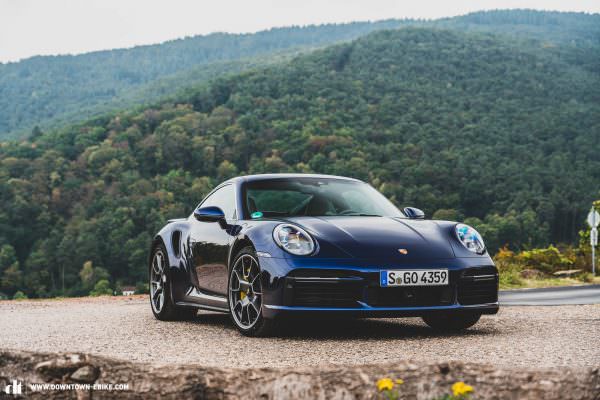

The myth of the electric car – What really matters
What is the range of the Taycan Turbo Cross Turismo? How long does it take to charge? What does charging cost? With record-breaking charging times and the establishment of a new charging infrastructure, Porsche are declaring war on range anxiety and promising fast, convenient charging. Is it enough? And can they beat Tesla?
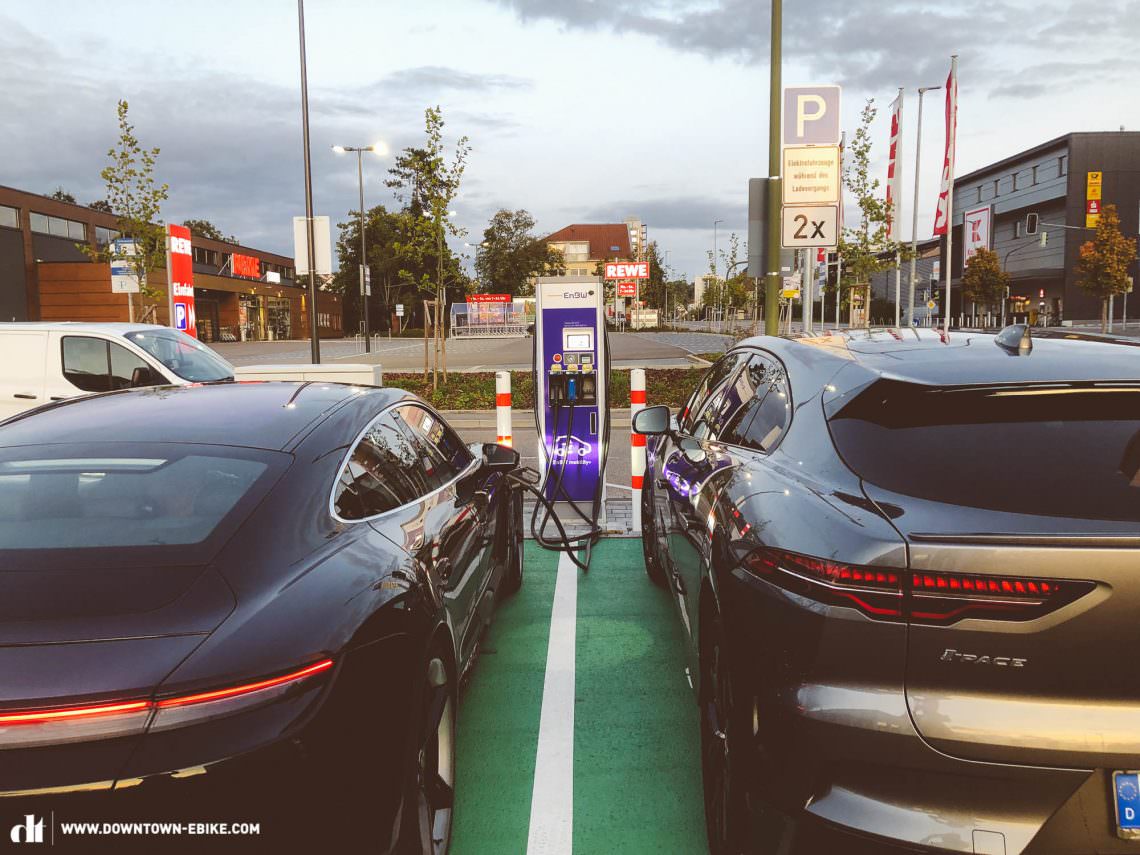
“What happens if I get stranded en route with an empty battery?” In all honesty, we’ve asked ourselves this question many times before. We’ve been on quite a few frustrating odysseys looking for charging stations with a wide variety of electric cars. The search reduces the essence of mobility, carefree travel from point A to B, to absurdity. Crawling along behind a truck on the motorway at 80 km/h in an E-car that costs € 200,000. A notification on your phone that charging has inexplicably stopped while you’re having dinner at the other end of town. Picnicking at a charging station because the fast charger was already occupied. The navigation system leading us to a defective charging station. Calling the recovery service because the car is empty and there is only one charging station and it doesn’t want to connect to the car. A six-hour journey taking ten hours. Arriving home four hours later than the other part of our group who relied on a combustion engine. We’ve experienced it all.

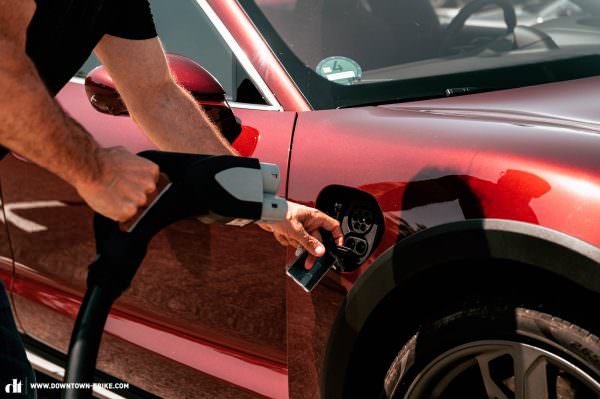
Are you still suffering from range anxiety or are you just living?
Range anxiety has been around since the 1990s. Today, it’s used to describe the fear that the range of an E-car might not be enough, requiring time-consuming recharging or even leaving you stranded with an empty battery due to a lack of charging infrastructure. When fear gains the upper hand, we lose sight of all the possibilities and alternatives open to us, even with E-cars!
Many complain that their everyday life is monotonous, which is obviously what happens if you always do the same thing! Switching to an electric car is a perfect opportunity to change our habits and add more variety to our lives!
Before you think about range and its potential pitfalls, you should be clear about your own needs. By doing so, many fears and problems resolve themselves automatically. Instead of worrying about how much range a car has, you should ask yourself how much range you really need. If you’re generally out and about in the city or commute short to medium distances, you will rarely use the full battery capacity.
What do you actually need a car for and how do you want to use it? In our search for efficiency and optimisation, we race from A to B, sometimes using rest stops just to refuel instead of actually resting. Occasional forced breaks could be just what we need in our day to day lives. Often we just want to arrive instead of enjoying the ride. But it’s a shame, since driving time is also living time! (Business) travel days are strictly regimented rather than extended by a day to take detours and do some sightseeing while in the area.
The myth of charging speed and battery size – Electric cars are only as good as you know how to use them!
How good a car is for you depends largely on yourself, your driving style and your individual requirements and usage. Depending on the way you use it, the questions of battery size and charging speed become irrelevant.
With a sophisticated 800-volt architecture that delivers record-breaking performance, Porsche pulls out all the stops with the Taycan’s electrical system to make charging as fast, convenient and efficient as possible. Technically, the charging the Taycan represents the absolute benchmark. The system design and intelligent thermal management for optimised charging ensure that the usable 83.7 kWh of the 93 kWh Performance Plus battery in the Cross Turismo can be charged at a power of up to 270 kW. However, the reality is far more complex.
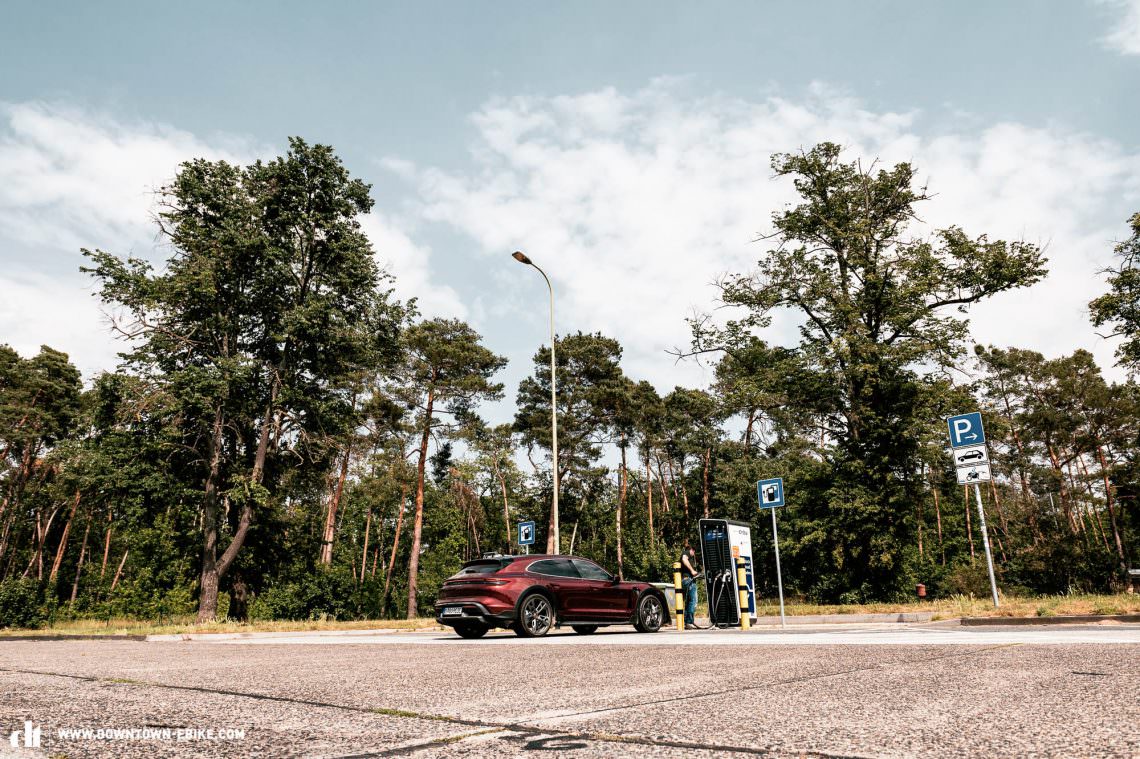
Numerous factors such as the battery charge, referred to as state of charge (SOC), battery temperature, type of charging station and outside temperature play just as crucial a role for the charging speed as the software of the car, the charging station and the way they communicate. With all these factors taken into account, no charging process is identical and certainly not consistent. The 270 kW charging power promised by Porsche is only available in ideal conditions and for a certain SOC. Pre-heating the battery via the Porsche Charging Planner is an important factor in this process, as is a relatively low state of charge. For example, if you drive to a fast charging station with an SOC of 60%, you’ll have to reckon with a 100 kW charging speed rather than 270 kW.
Before thinking about range, it is important to understand the charging processes and their optimal efficiency ranges and, of course, the different charging options that allow us to add a little variety to our lives. Adopting the right charging strategy can make a huge difference!
Home-Charging
According to studies, charging at home is sufficient in more than 80% of cases since the distances driven are usually very short. While charging from a standard 230V household outlet takes a long time, it is more than fast enough if you only cover short distances of less than 100 km per day and are able to charge at night. Charging at home is much faster with an industrial power outlet. With the 22 kW onboard AC charger, the Taycan can be charged at up to 22 kW, which is ten times quicker than a regular socket. You’ll generally find 11 kW charging boxes currently being installed in private houses and these are also subsidised by the German government. This means that a completely empty Taycan with a 93 kWh battery will take 9 hours to be fully charged. Even if at some point the charging power had to be reduced to 5 kW due to grid capacity, you can still charge your battery with 40–50 kWh overnight, which gives you a range of approximately 150–200 km, depending on your driving style. Things start becoming problematic if you can’t charge at home and have to rely on public infrastructure, due to the added complexity of limited times and finding a free spot.
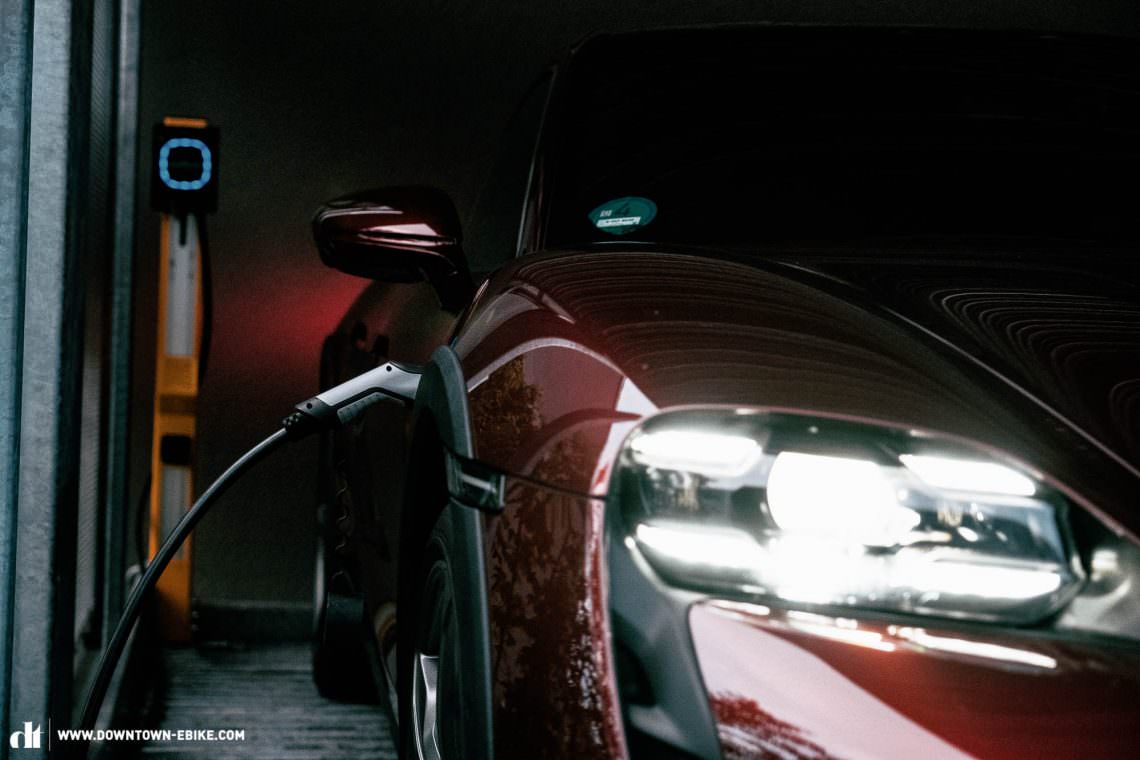
Destination-Charging
Mostly relevant at locations such as hotels, restaurants, shopping malls, Used on the go if necessary or deliberately to go out to eat and shop, or to enjoy whatever the destination has to offer! Destination chargers usually offer charging speeds of up to 22 kW.
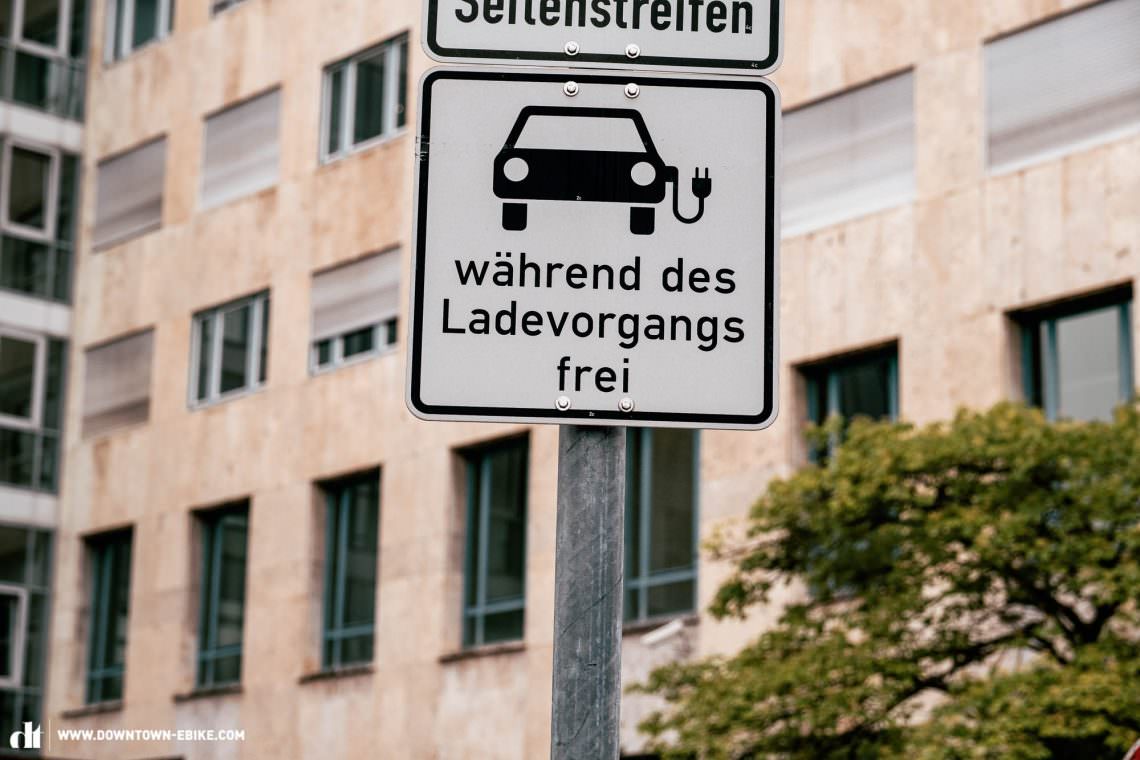
Fast charging
For long journeys and if you forgot to charge your electric car, like when you forget to plug your mobile phone in overnight! To make sure that we’re all on the same page, fast is relative. How fast you actually charge depends on numerous factors. Fast chargers are often located in easily accessible yet unattractive locations at motorway service stations or in industrial areas. If you plan the charging stops correctly, you can use the time to have lunch, a coffee break or just to rest – me-time, without being disturbed by anyone. In contrast to most electric cars, the Taycan only takes 20 minutes instead of 40 minutes to reach the same charge level on a fast charger, which makes a huge difference, not only when you’re in a hurry but also in the rain or blazing sun!
Wouldn’t it be nice
2,100 kWh on wheels, the Porsche Mobile Charging Unit could charge more than 20 Taycans but the largest power bank in the world isn’t open to the public.
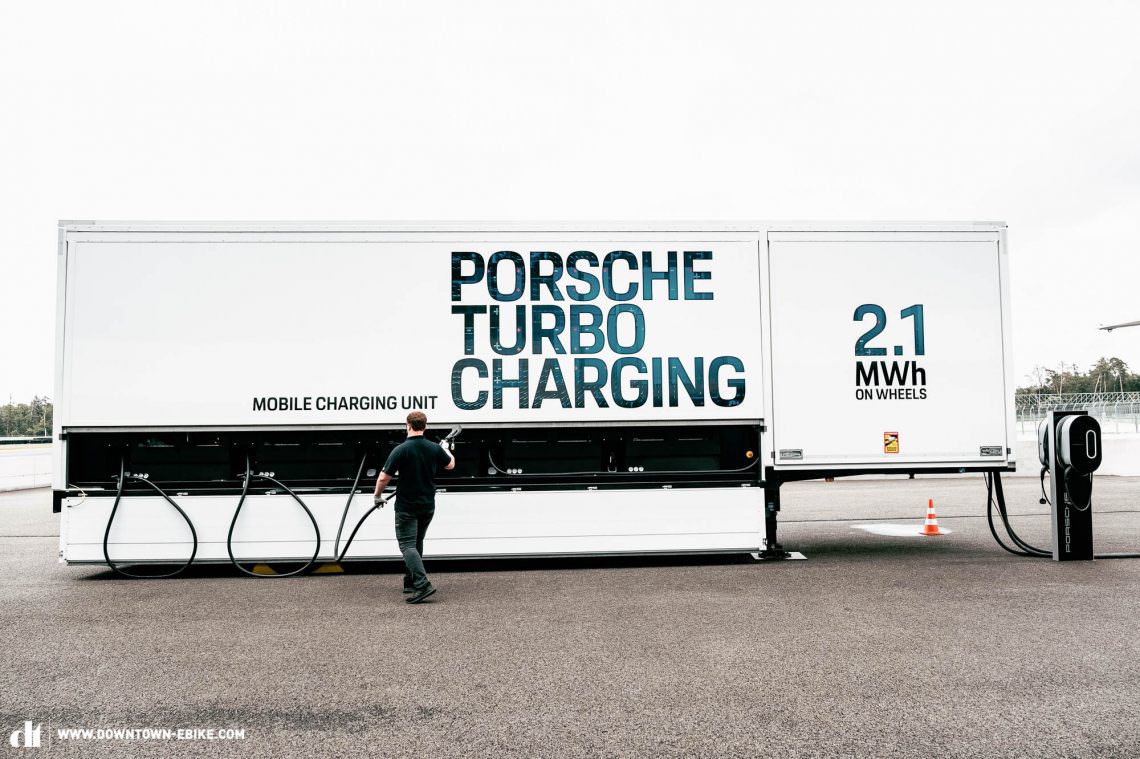
Correct navigation – The key to effective charging with the Porsche Taycan Cross Turismo
Clever charging is the key, at least if you are aiming for maximum charging speed or want to optimise your journey. Particularly for medium and long distances, you will almost inevitably need the navigation system to take sufficient factors into account to use the infrastructure available to you optimally. With their Charging Planner integrated into the navigation system, Porsche are already trying to incorporate such considerations into the calculation of optimal routes and charging stops. The system is also said to give preference to charging stations with higher capacities even if they’re not directly on the route, aiming for shorter charging times to reduce the total travel time. To use the maximum available charging power, the system also preconditions the battery for optimal charging before you reach the charging station. If the SOC is calculated to be below 13 percent when you arrive at your destination, the Charging Planner will add charging stops so that you have a minimum range at your destination. In the Range driving mode, this is dropped to six percent SOC, thus pushing the potential range even further in order to avoid charging stops. The Charging Planner remains active throughout the journey and continuously optimises the planned route, including charging stops, taking real-time traffic data into account. When calculating the estimated arrival time, the required charging time is also taken into account. The online functionality required for the Charging Planner is included with the Taycan as part of the Porsche Connect package for three years (country-specific), after which you’ll be charged € 329.00 per year.
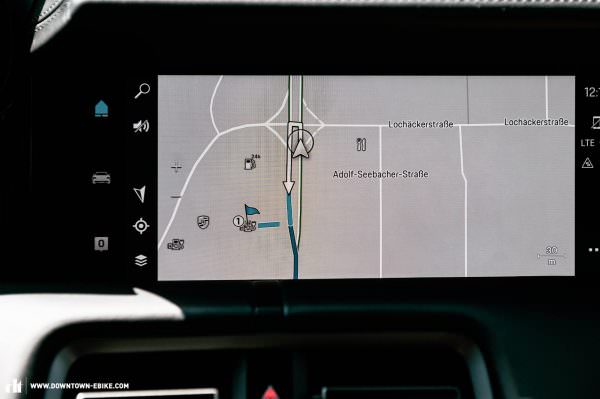
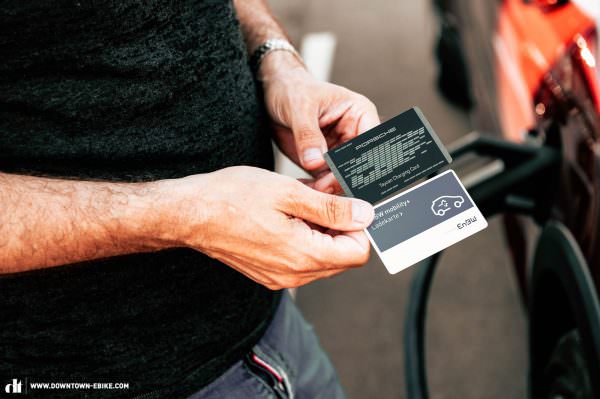
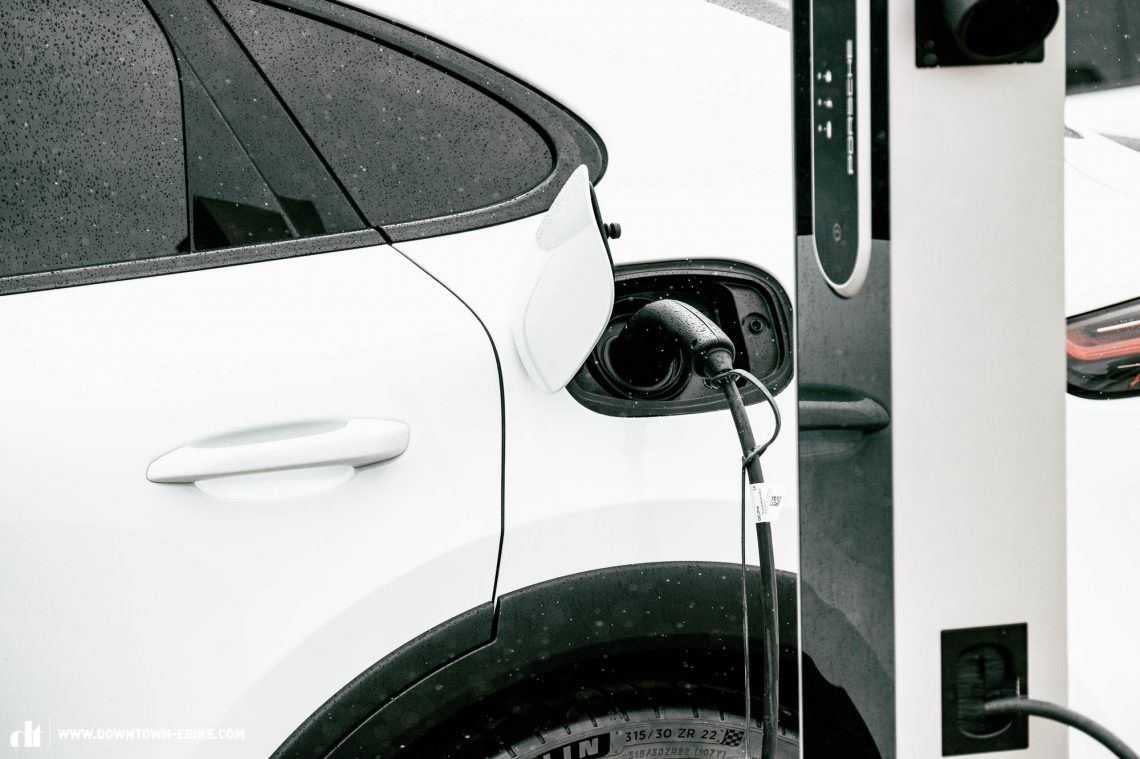
The Charging Planner is definitely needed, even if we were disappointed with the functionality of the system in practice. Our test vehicle didn’t find the entrance to the Porsche Center Pforzheim with its fast charging station, instead taking us against the direction of travel through a petrol station. In addition, it didn’t take existing fast charging stations into account during route planning when we double-checked it every now and then, resulting in suboptimal routes and unnecessary detours, or at the very least longer travel times than current infrastructure would allow. Porsche’s in-house navigation works well in most cases but, depending on network coverage, it can take a long time to calculate your route. While various other electric vehicles have significantly worse navigation systems for route and charging planning, there are better ones too, like Tesla! Porsche’s advantage: even Tesla can’t charge as quickly.
While we’re fans of Apple CarPlay, some important features, such as zooming on Google Maps, aren’t possible and there is no interface for vehicle data and charging stations. This means that if you use GoogleMaps, you don’t have any access to range-based navigation, leaving it to you to manage the charging stops. The battery won’t get preconditioned for optimal charging either. Android Car Play is currently not available but it will be in the future, though it’s a little more complex to integrate. According to Porsche, 95% of their customers use Apple anyway.
Too bad – Porsche’s in-house navigation system can’t yet do justice to the € 190,000 price point. Over-the-air updates are technically possible but currently, you’ll have to go to the Porsche Center to update your software. The challenge with software is that there’s always scope for further development and more complexity gets added with every new function. With this in mind, a lean, universal software architecture is essential in preventing E-cars from ending up like the iPhones from ten years ago!
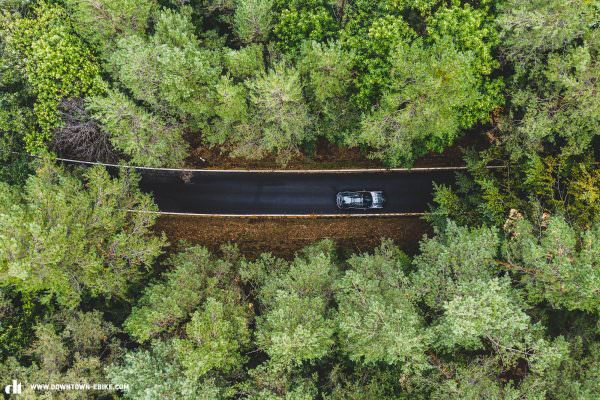
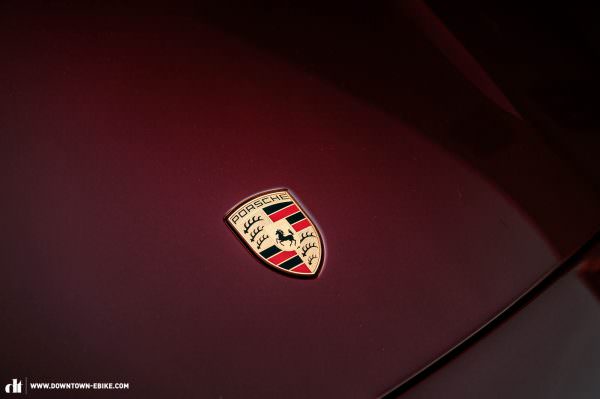
In future, we would like to see more in-depth and intuitive integration, in addition to greater accuracy and reliability. We would also like to see two additional features added:
1. With a Porsche, you will occasionally want to drive fast, for which you will happily sacrifice having to make more charging stops, as you would with a high-performance combustion car. However, there’s no way of telling the navigation system to do this. Similar to Range mode, we would like a speed button to make it clear to the navigation system to calculate maximum power consumption and adjust the charging plan accordingly.
2. At other times, people just want to take a Porsche for a ride to explore beautiful places. With Roads, Porsche have already created a community that provides great route suggestions and roads. Deeply integrating this into the navigation system to include fast chargers, destination chargers and points of interest could be a great alternative. Instead of getting to your destination as quickly and efficiently as possible, it could also be nice to have more adventures when you’re on the road and spend more time in the Porsche.
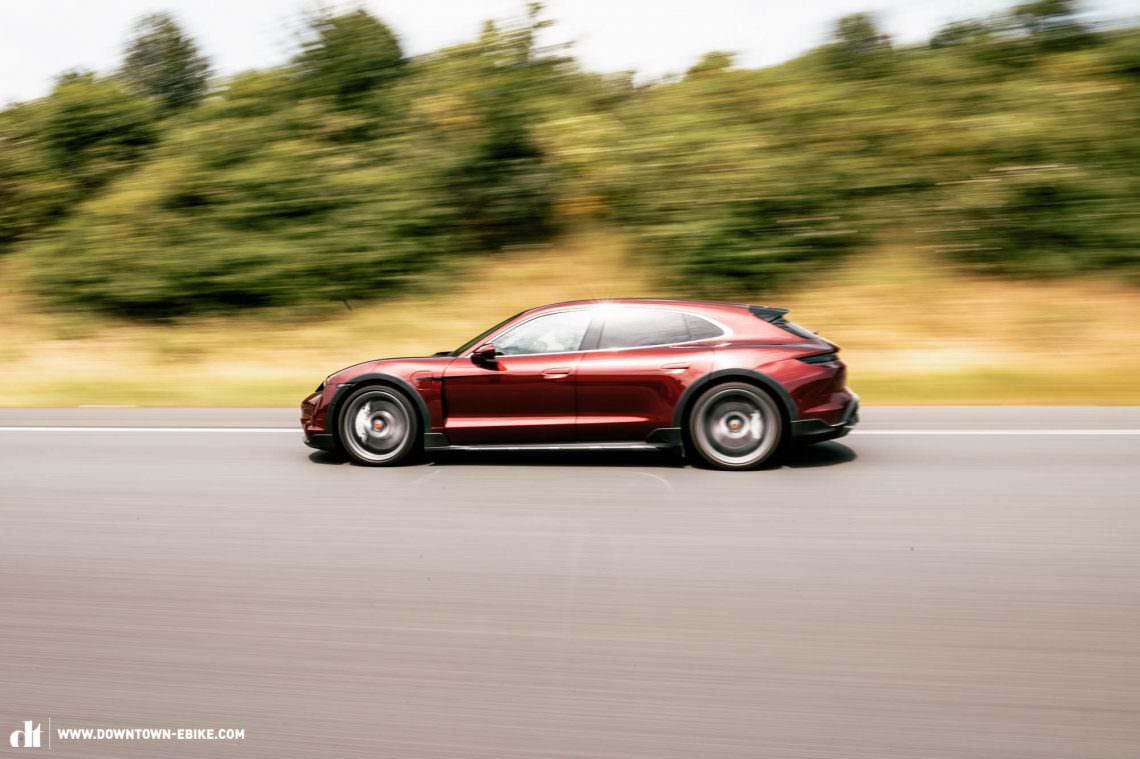
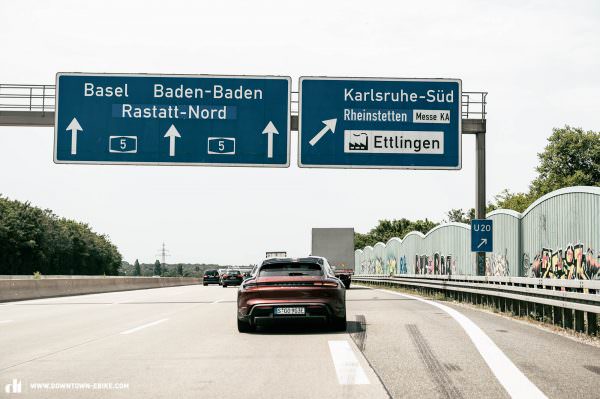
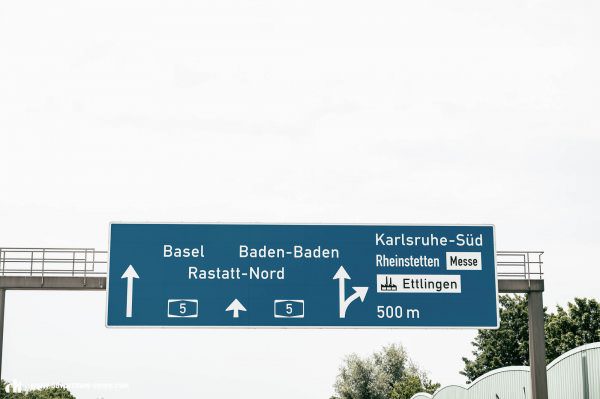
This isn’t just Porsche’s problem, it’s a problem all car brands face
There is more to driving an electric car than the car itself. Regardless of whether you’re driving a € 30,000 E-car or € 190,000 Taycan, you’ll face the same challenges. These aren’t exclusively Porsche’s problem, but they are problems that Porsche will have to face.
We experienced a wide variety of funny, exhausting and unnerving moments at different charging stations. Standing in the rain without an umbrella, sweating in the blazing sun, drinking a cold cola in the Porsche Center Pforzheim, trying to stay incognito, occasionally alone and sometimes doing yoga in good company at a rest stop. A charging stop at 3 AM between Frankfurt and Stuttgart, 500 m behind the petrol station on the sparsely lit trucker parking lot is more than just annoying when you’re alone. It’s not the place and time you’d choose to hang out by yourself, especially not when driving a € 190,000 E-car.
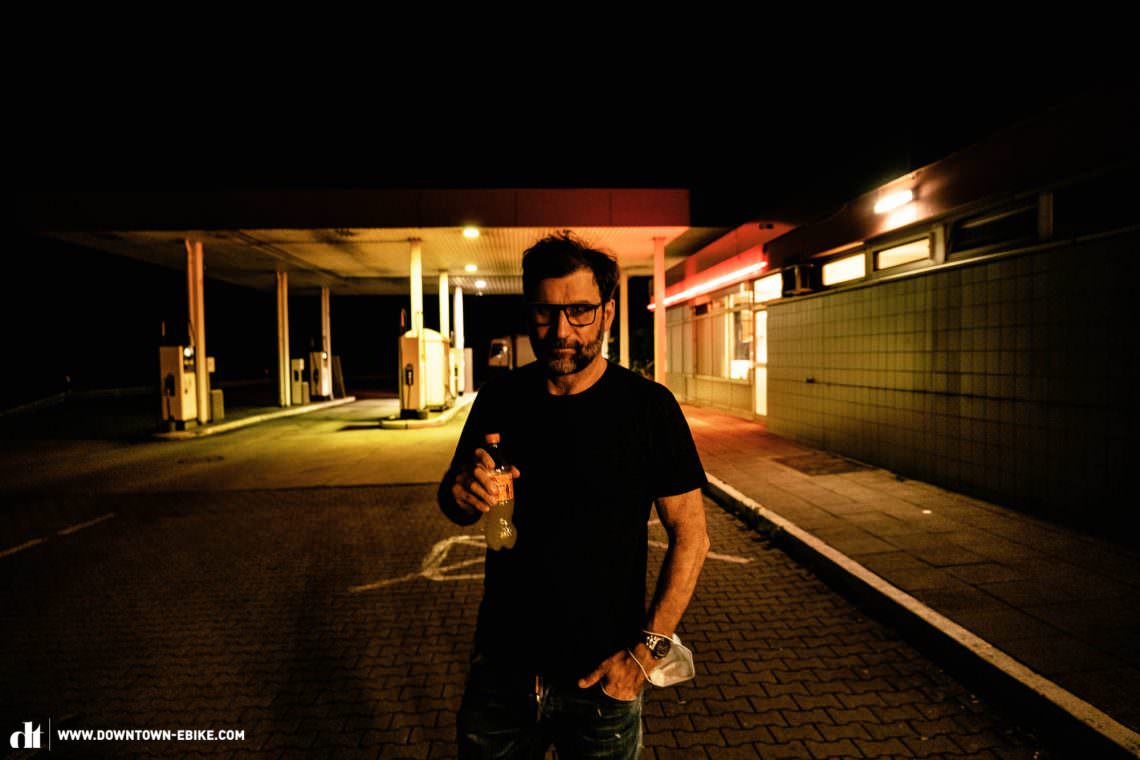
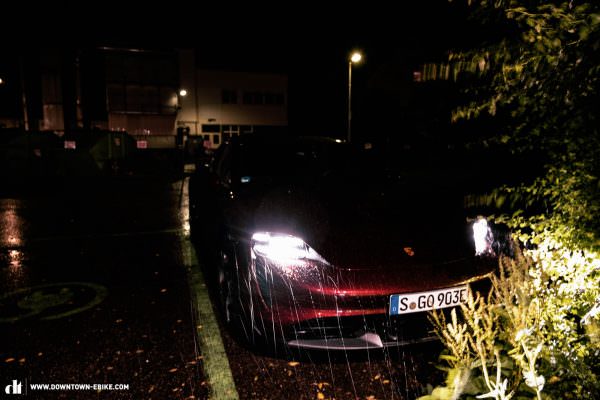

In general, the locations and concepts of charging stations still have a long way to go. The locations often don’t offer drinks or other snacks like a regular petrol station. A simple vending machine would be great, though we’d prefer to have a café! On top of that, there are virtually no covered charging stations, whereas every petrol station has a roof. Instead, you have to park your € 190,000 E-car in the blazing midday sun or in the rain. You should never leave home without sunscreen and an umbrella when driving an electric car. The electrically-operated flaps for the Taycan’s charging ports behind the front wheel arches are fancy, but they work unreliably in the rain due to the decreased touch sensitivity when wet. Hence they are best opened on the display of the centre console before getting out of the car.
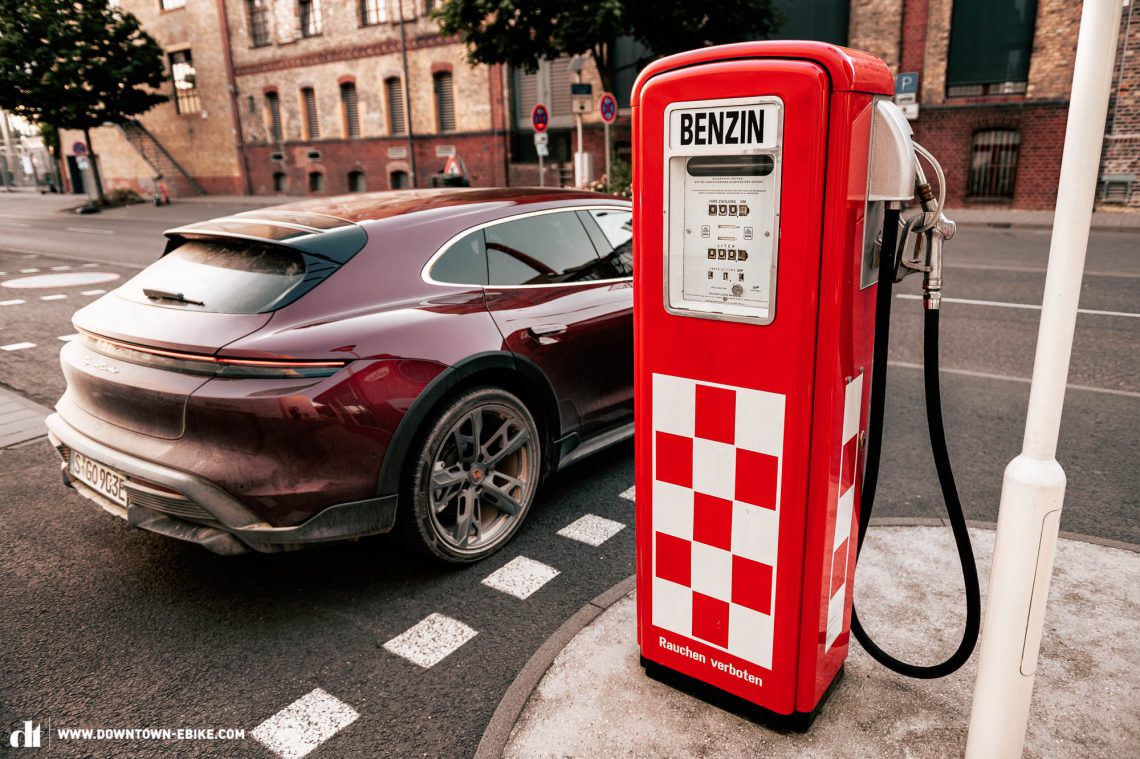
The battle for charging stations has long begun
The latest battle in the world of mobility is between fully electric cars and hybrid vehicles. While Tesla customers can enjoy exclusivity at Tesla charging stations until the end of 2021, the challenges ahead are obvious. Charging stations in the inner cities are becoming increasingly crowded because infrastructure can’t keep up with the number of new vehicles being registered. In addition, there is the fact that electric cars can currently access privileged parking spots, which get used by many hybrid vehicles that don’t actually need them but do so anyway because it’s convenient.

The good news is that Porsche know that infrastructure is one of the big factors that will determine the breakthrough of electric mobility. With the establishment of the IONITY joint venture, BMW Group, Daimler AG, Ford Motor Company, Volkswagen Group, which includes Audi and Porsche, have set up an initiative to establish a European fast charging network for electric vehicles. Hyundai and Kia have now also joined IONITY. New concepts such as fast charging stations with dedicated lounges and amenities are being planned, as is the expansion of destination charging points. The Porsche dealer network will also be equipped with 800-volt fast charging stations across the board.
Even if you buy the best electric car, the cards can still be stacked against you – unless you can choose from several (charging) cards!
An electric car is only as good as the environment in which it’s driven and charging infrastructure varies a lot, even within Germany. Charging regularly gets interrupted or fails and some charging stations don’t work or they decline the charging card. The Porsche navigation system guides you to charging stations but it doesn’t tell you whether they are free, nor does it guarantee that the Porsche charging card will work. We would like to see a higher level of intelligence or more in-depth communication of real-time data.
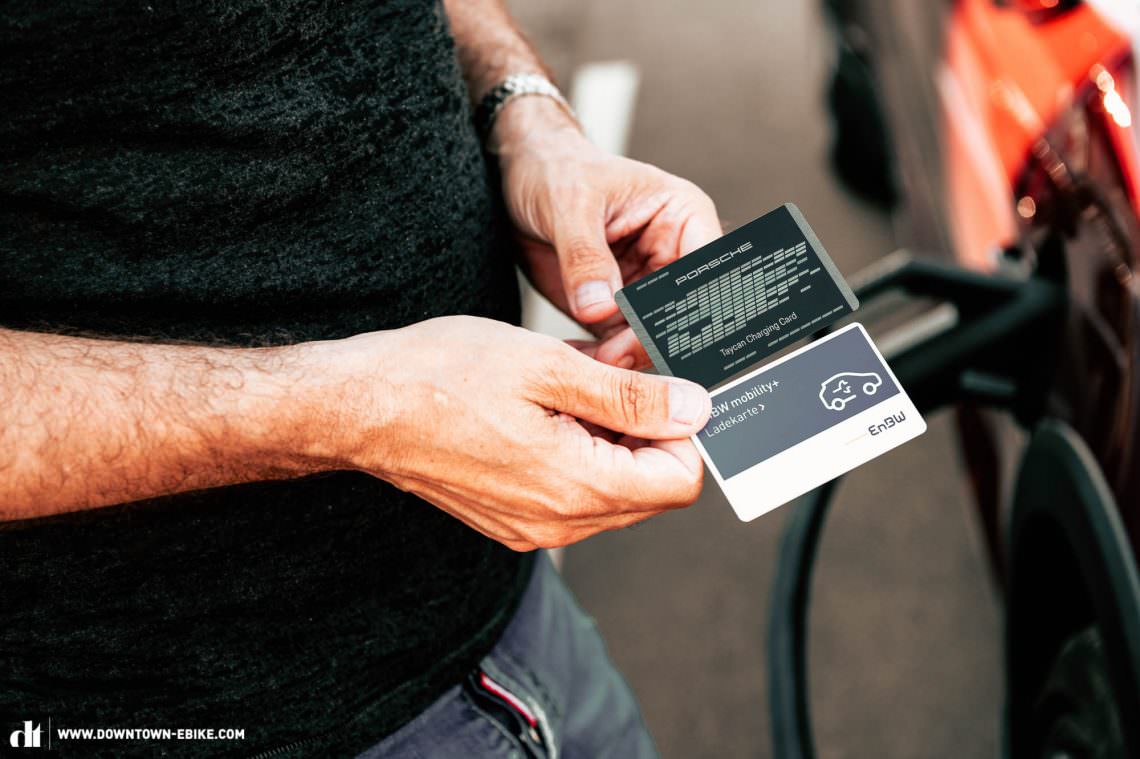
This isn’t the only reason it makes sense to have several charging cards from different providers. Depending on the card and the contract, you can pay vastly different prices at the same charging station. Our test driver Erik uses three cards along with the Porsche app, offering an alternative way to identify yourself via a QR code. For example, you don’t pay any additional fees at IONITY fast charging stations besides the € 0.33 per kilowatt hour when charging a Taycan, which is roughly equivalent to what you’ll pay charging at home, whereas the regular tariff is € 0.79. At EnBW charging stations, the price is € 0.39 or € 0.49 depending on the tariff selected. If you charge incorrectly, a full charge can easily cost twice as much! Shrewd drivers use the free charging stations at department stores, sabotaging the concept of destination charging as more and more people go there only to charge their car rather than go shopping!
Would we buy the Porsche Taycan Turbo Cross Turismo?
The short answer is no. The longer one is as follows: The Porsche Taycan Turbo Cross Turismo we tested is more sports car than any normal person would ever need. When it comes to pure driving performance, the Porsche Taycan Turbo Cross Turismo is absolutely outstanding. For € 190,000, you get a high-performance car that is versatile enough for everyday use and has a relatively positive social image. Whether it’s a family holiday, a bike weekend or a day at the racetrack, with the appropriate driving style, you can have fun wherever you take the Taycan Turbo Cross Turismo. However, there will inevitably be E-car specific challenges to consider that you won’t crop up with combustion engines and you’ll probably want to avoid in a time-optimised life. However, if you change your understanding of mobility and cleverly combine the different charging options of home, destination and fast charging, new worlds can open up and add a little spice to your life. In an electric car, navigation and charging need to be mutually inclusive, especially over medium and long distances. This is exactly where Porsche’s digital ecosystem doesn’t do justice to the € 190,000 price tag and Tesla are still leading the way in this regard.
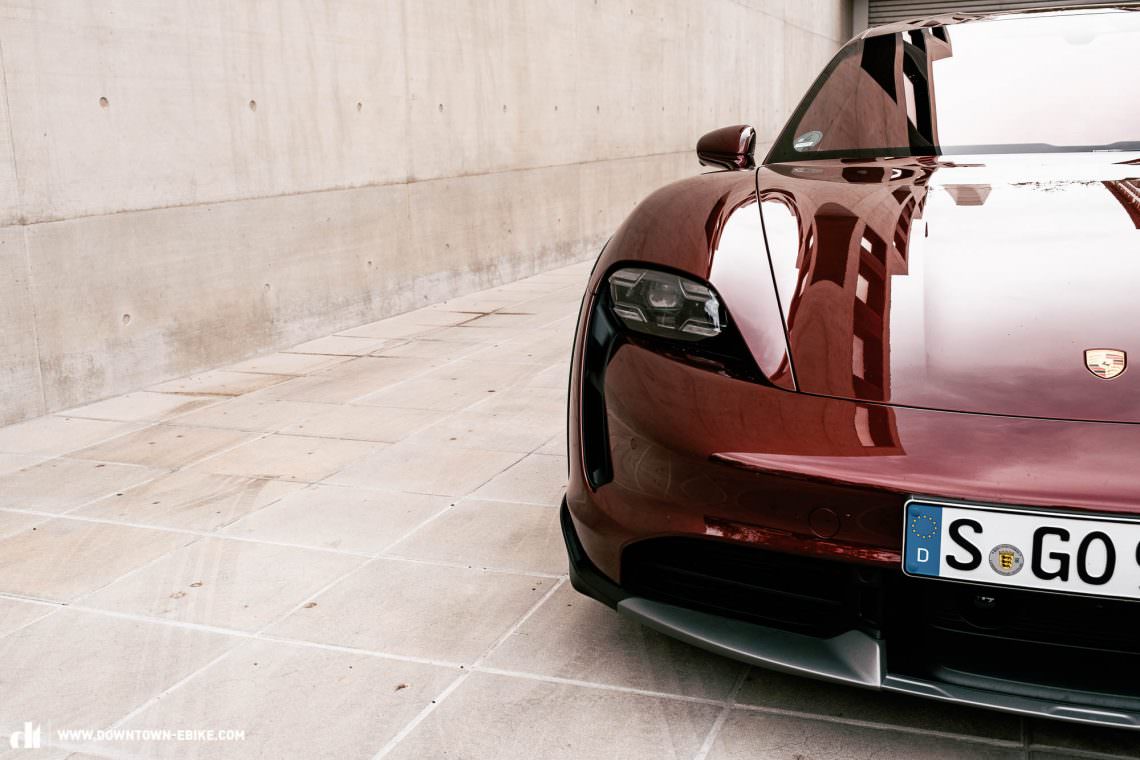
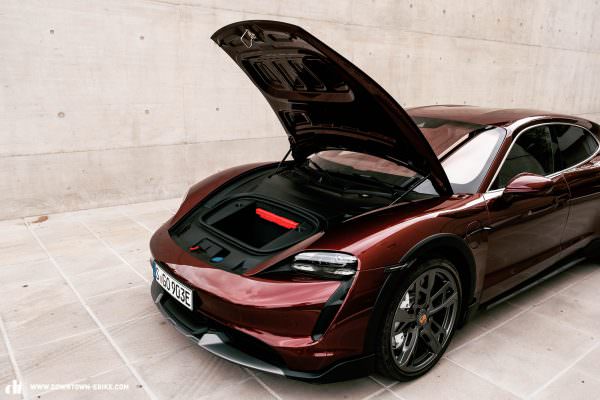
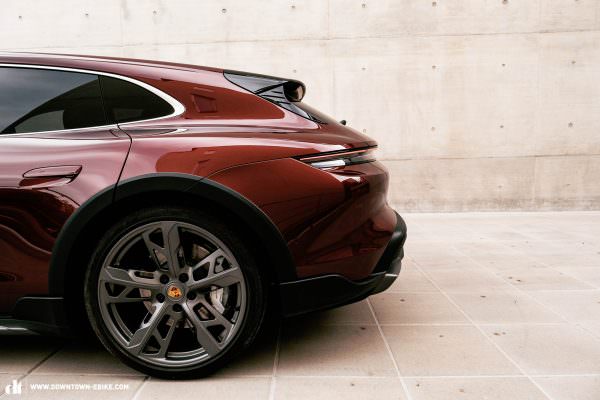
With the Turbo model, it’s all about the Supreme phenomenon. “I pay a lot of money so that others know that I’ve paid a lot of money.” The actual added value in everyday life is almost zero. Since our stomachs are still settling after the acceleration orgies we had with the Porsche Taycan Turbo Cross Turismo, we would, assuming we had the money, go for the Taycan 4 Cross Turismo, starting at € 95,700, specced with a few worthwhile upgrades. It offers the same Star Trek-like experience and just makes you want to drive! In our opinion, you can achieve the best balance between adequate sportiness that doesn’t go over the top, energy efficiency and everyday practicality by opting for the following upgrades: Rear-axle Steering including Power Steering Plus, Sport Chrono Package, Porsche Electro Sport Sound, Adaptive Sport Seats Plus, noise-reducing insulated laminated privacy glass, panoramic roof and LED Matrix main headlights including Porsche Dynamic Light System Plus, Park Assist including Surround View, Lane Change Assist and Adaptive Cruise Control. This perfect package would come in at around € 120,000.
Is the world ready for E-mobility
We say YES! Nothing can grow without facing problems and challenges, and that’s a good thing. E-mobility calls many usage concepts into question and opens up new possibilities. We are at the beginning of an epochal shift and have the chance to create a long overdue, new understanding of mobility, thereby changing society for the better. The solution lies in a sensible mix of mobility that is fun instead of frustrating, promotes health, relieves inner city congestion and adds variety to our lives. Choosing your means of transport consciously is a crucial part of this, requiring you to ask yourself a few questions. What do you use a car for? What must it allow me to do? Weather permitting, you could alternatively use your ebike to commute, avoiding the additional stress of rush hour traffic jams while also getting some exercise.
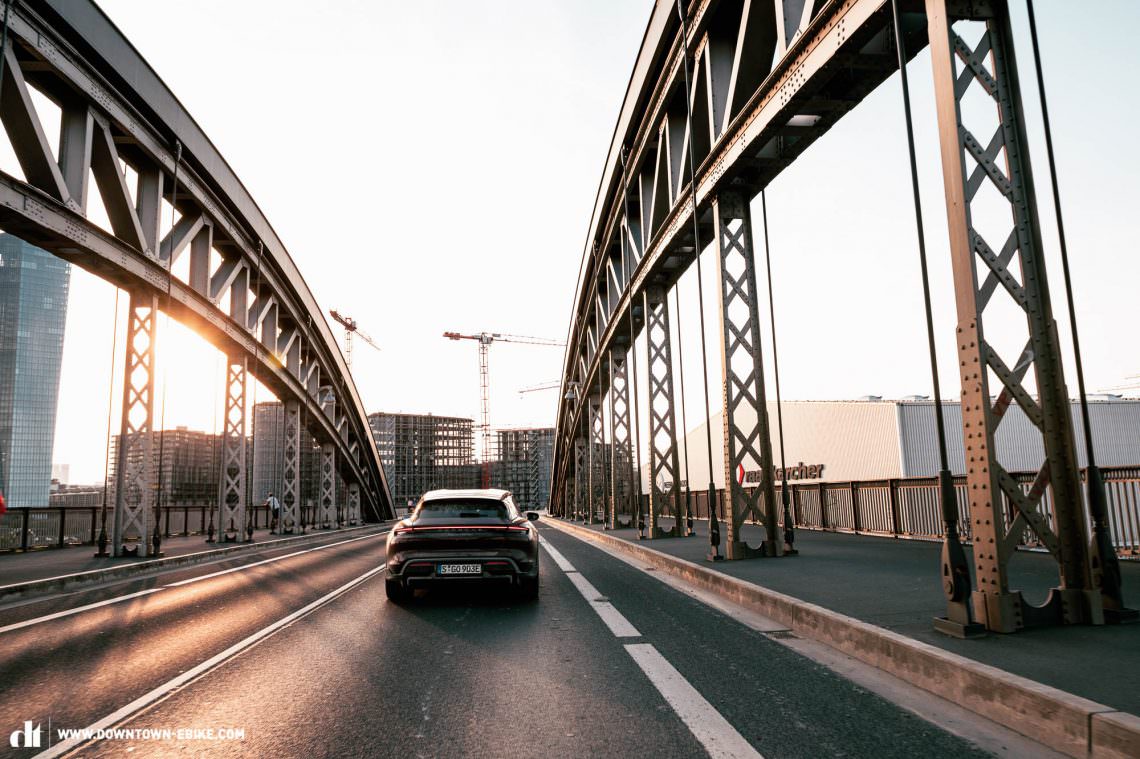
Stop waiting for Friday – electric cars break up our routines, force us to take the breaks our busy lives are much too short of and challenge us to overcome our (range) fears. And even if you do get stranded (which almost, but never actually, happened to us once) you can always call the towing service. Regardless of whether it’s an ebike or an E-car, mobility means more than just getting from A to B. It is an attitude towards life and therefore a fundamental part of its quality. We think of time spent traveling as time spent living, so it should be fun and allow us to explore new places. Keyword: destination charging. Why should everything always be quick and efficient? When you drive a Porsche, don’t you want to drive it for as long as possible? #bringbackthefunofdriving
We may soon be faced with a situation in which the expansion of charging infrastructure can’t keep up with the number of new E-cars being delivered. As a result, we’ll see queues at the charging stations, which will lead to a lot of resentment. Everyone involved must be aware of this possibility and avoid it at all costs, otherwise the enthusiasm for electric cars will come to a grinding halt!
Yes, charging E-cars presents us with new challenges and, at first glance, seems to offer less predictability and more complex planning than a combustion engine. Infrastructural and technological progress will lead to significant improvements here, but we will not be able to avoid rethinking our routines and our understanding of mobility. Faster, bigger and more isn’t always the solution. Reality is more complex. The key is to be smart about mobility, charge cleverly and use the vehicle of your choice as required. We know from ebikes that everyone wants the biggest battery when, in fact, it doesn’t just end up costing more but usually also has a negative impact on handling. On top of that, very few actually make full use of that battery capacity. Modular battery concepts such as those used on ebikes could make for an interesting approach. However, we would need to educate consumers and find innovative technologies to do so!
As car fans, consumers, media, industry and politics, it’s up to us to break the routines that have become so entrenched over the past decades, to implement and live out new solutions and start each day with the conscious decision to make the future a future we can look forward to.
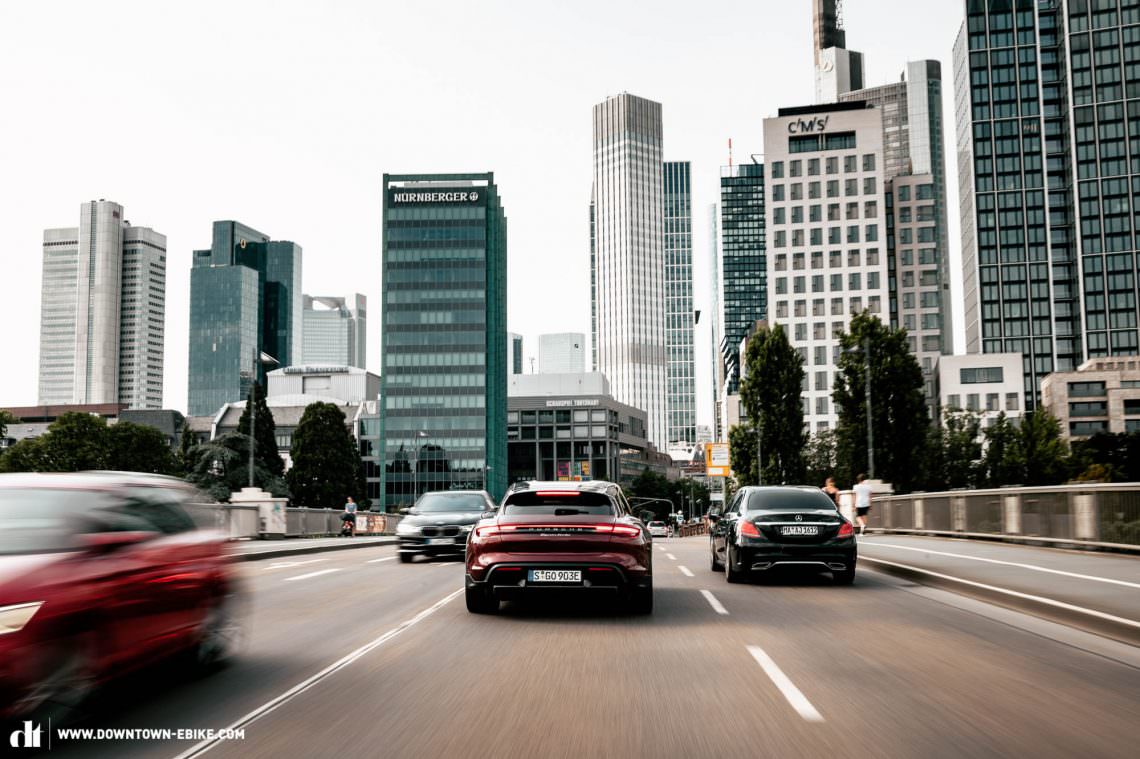
All tested e-cars: City Transformer Prototyp | Fiat 500e | Honda e | KIA EV6 | Opel Rocks E | Polestar 2 | Porsche Taycan | Smart EQ Forfour | Tesla Model 3 Dual Motor Long Range | VW ID.3 | VW ID.BUZZ
Words: Robin Schmitt Photos: Robin Schmitt & Valentin Rühl


